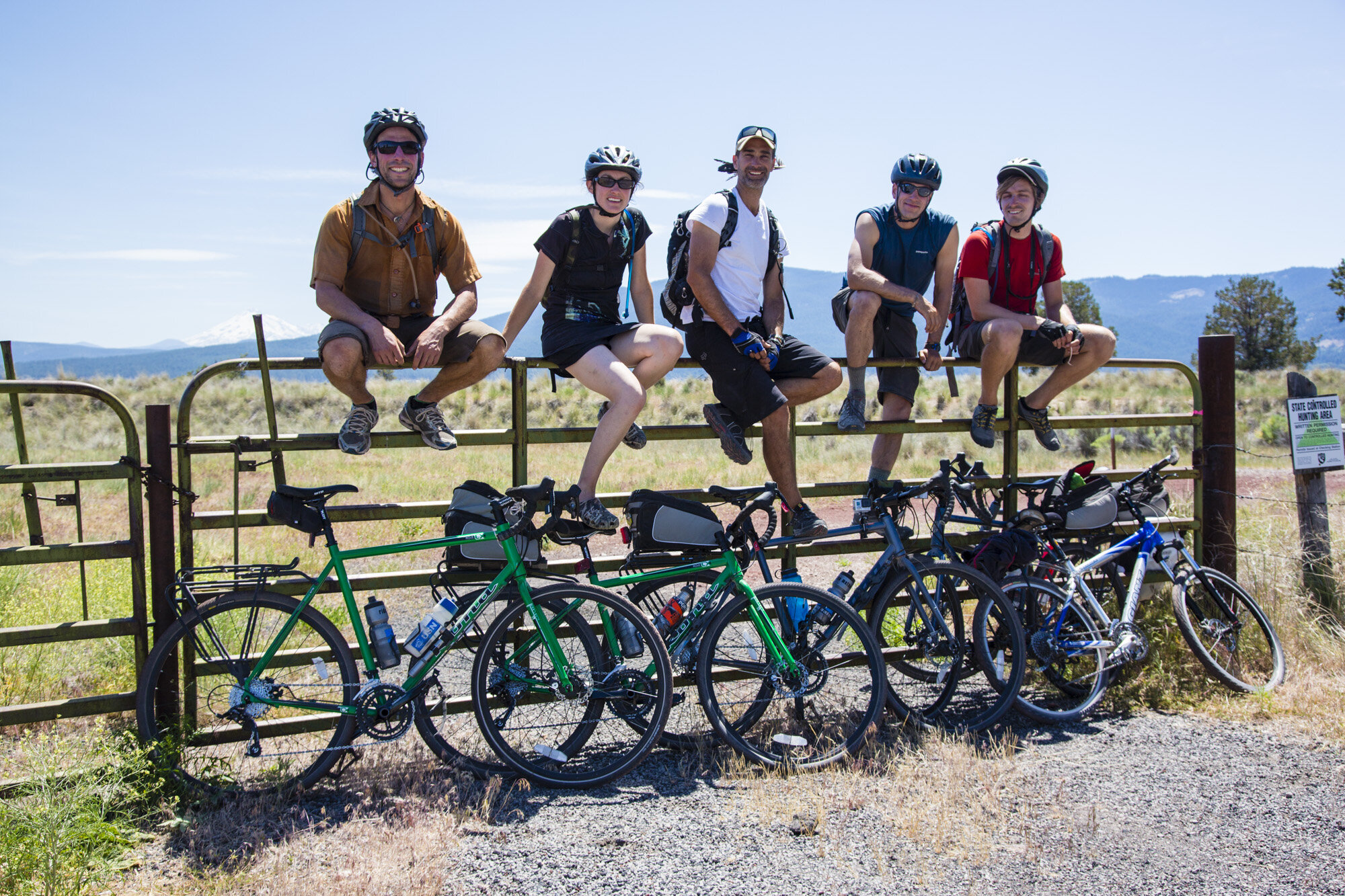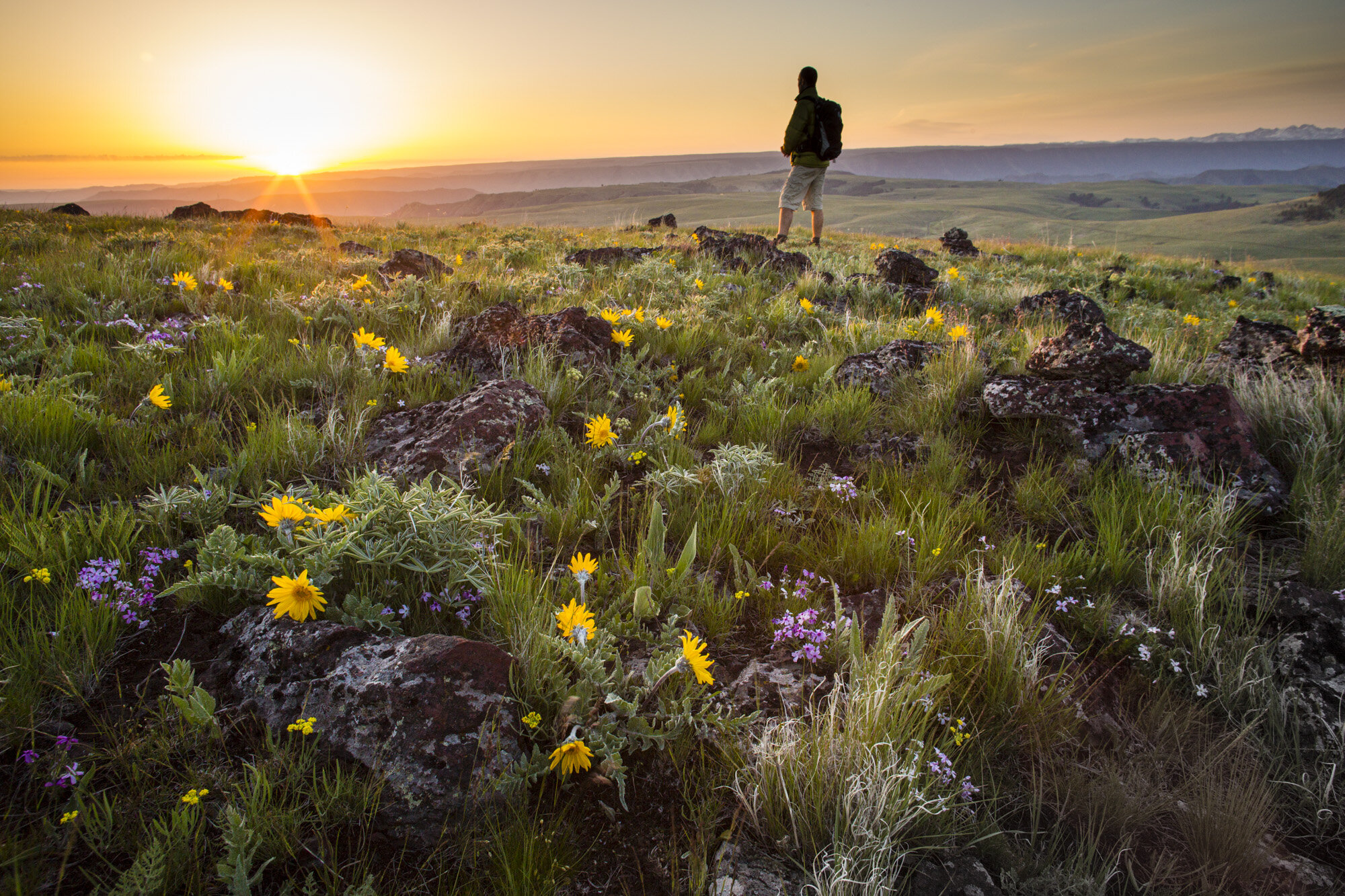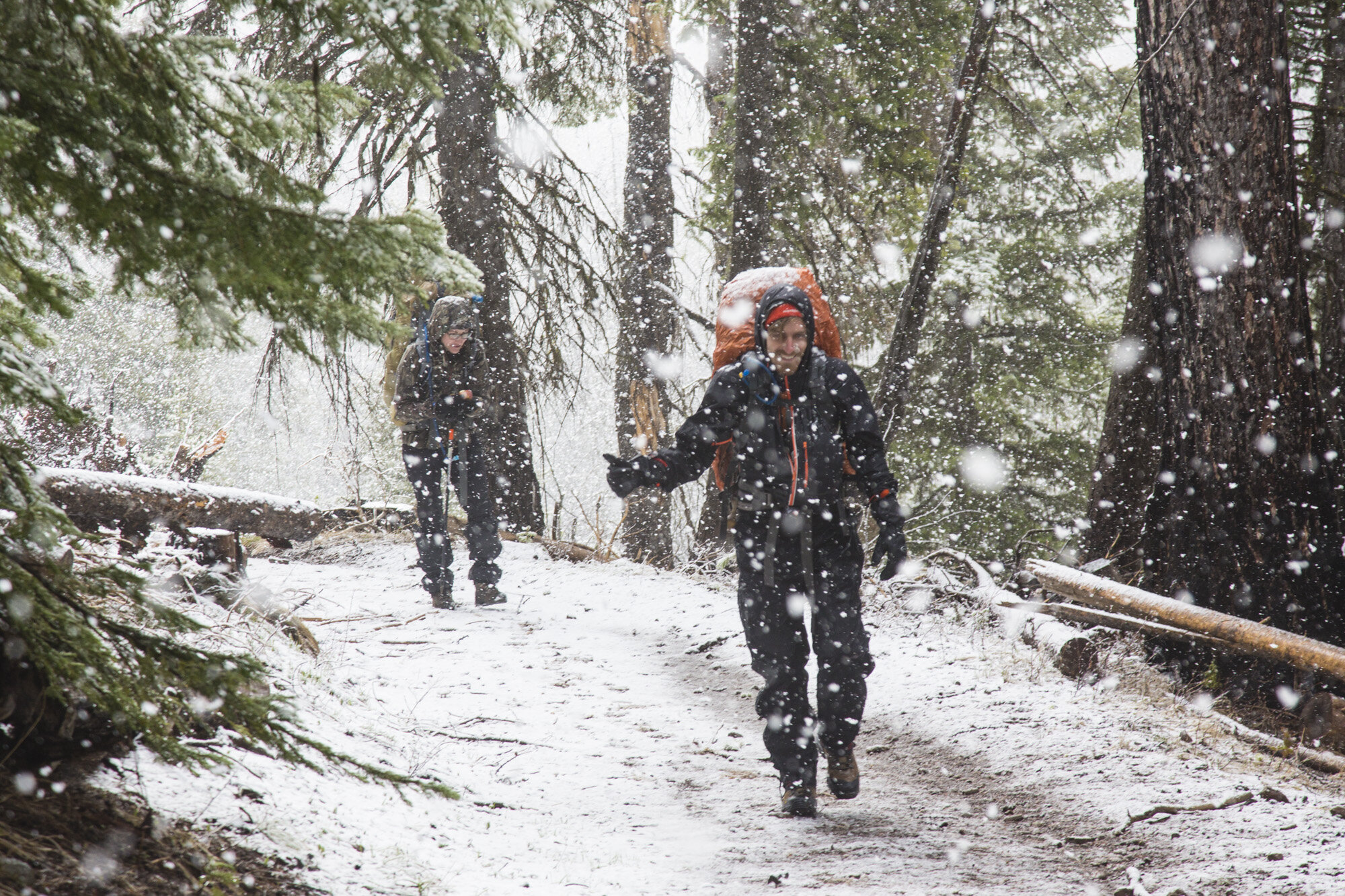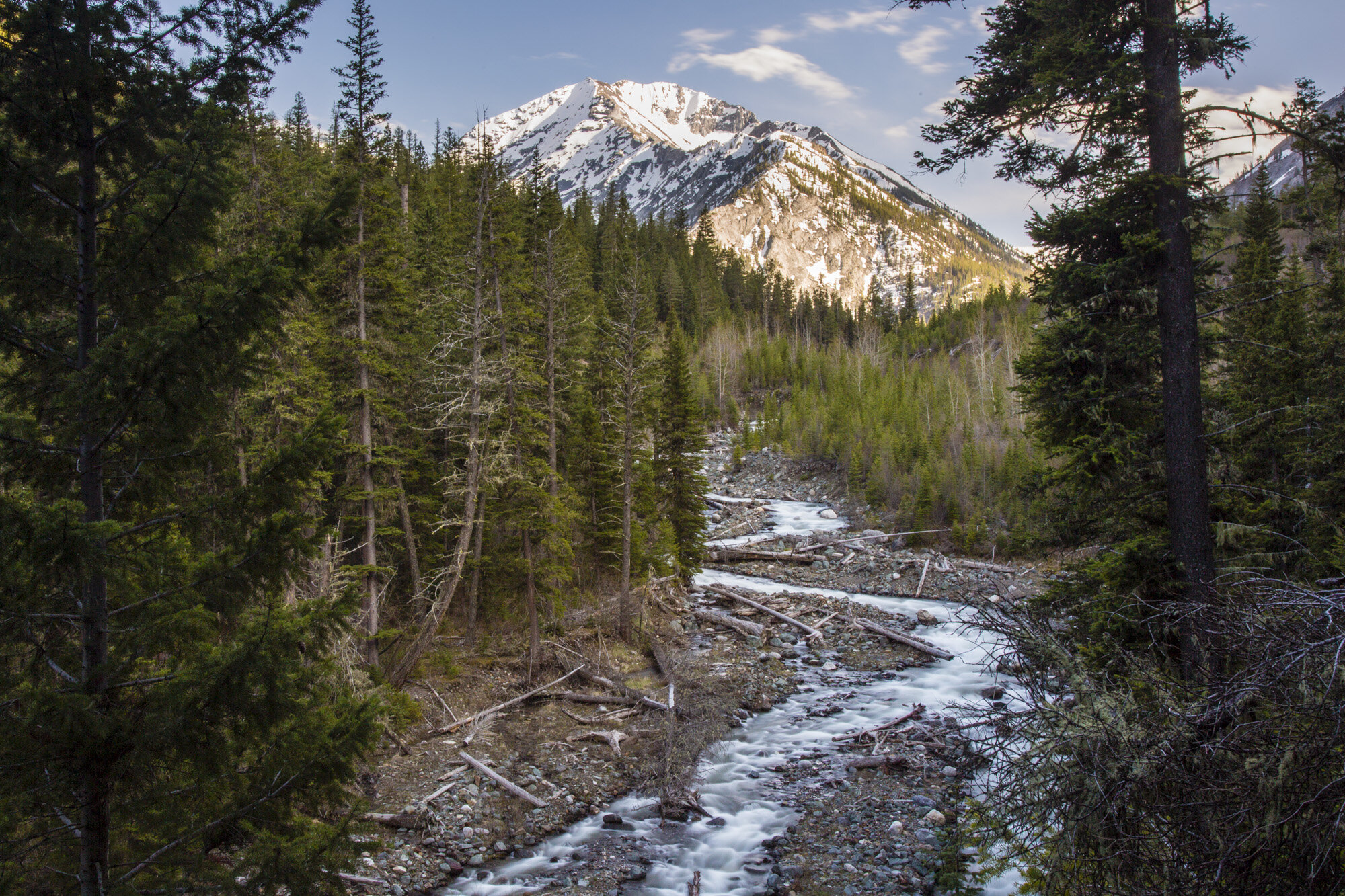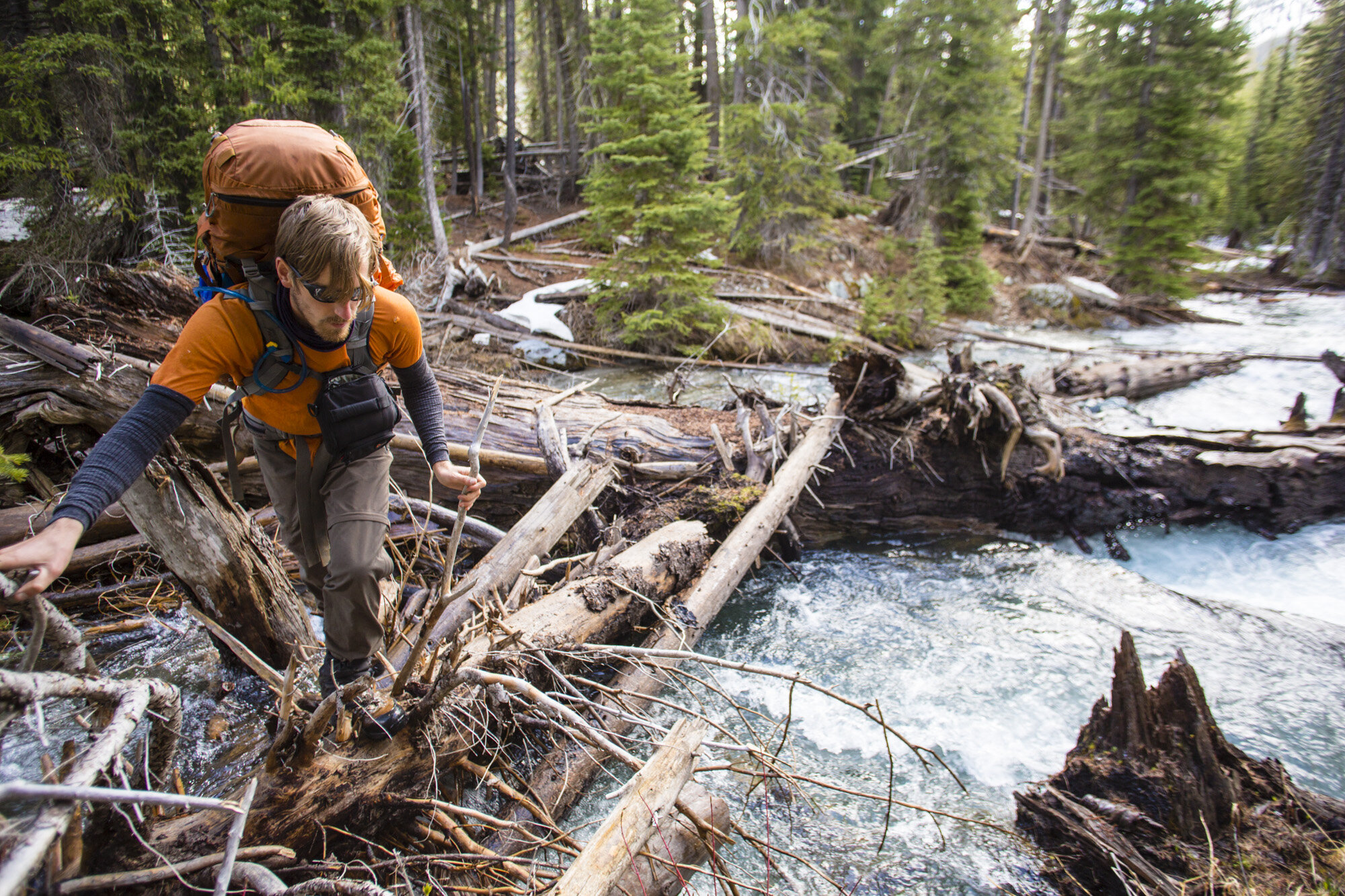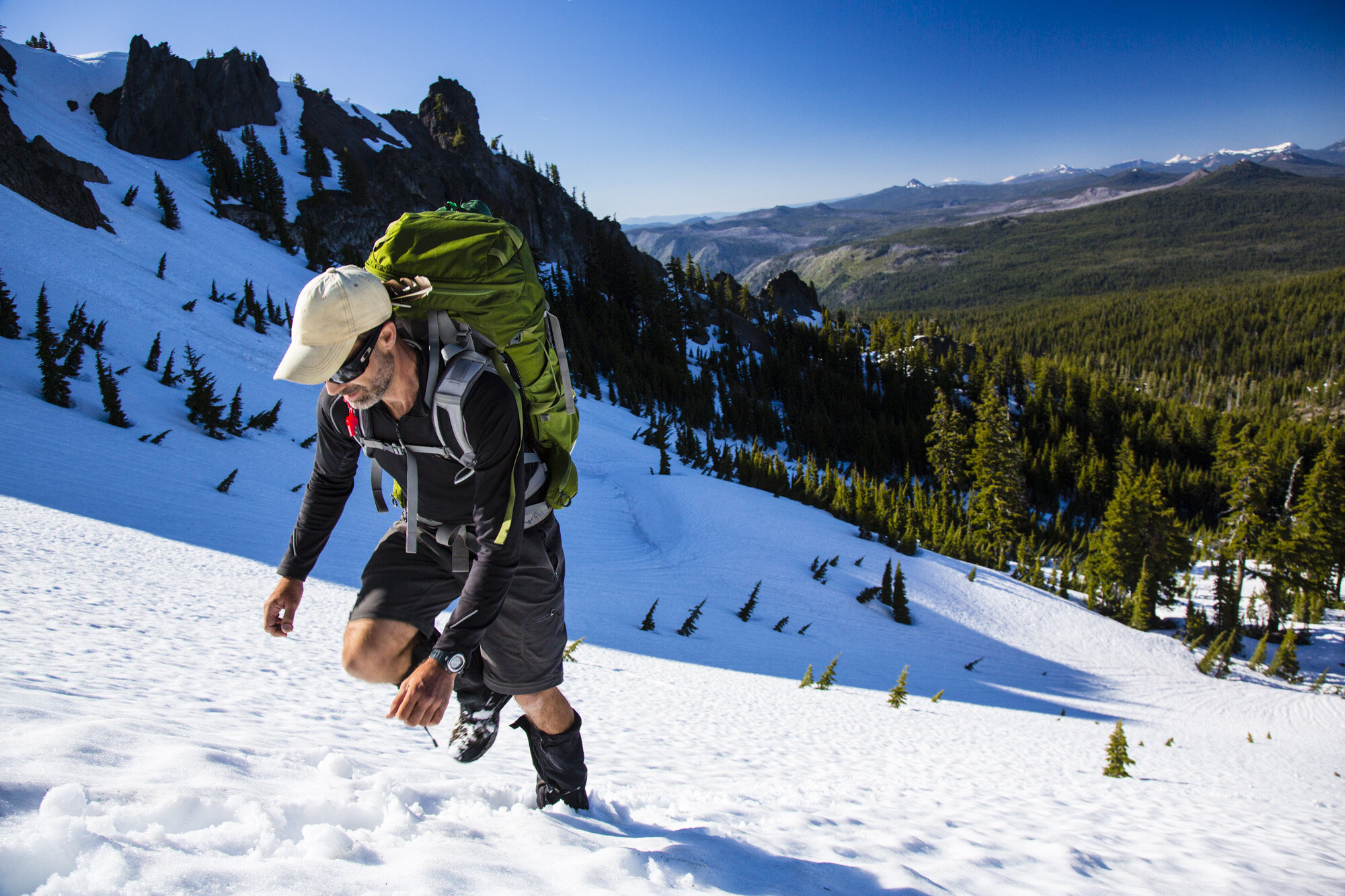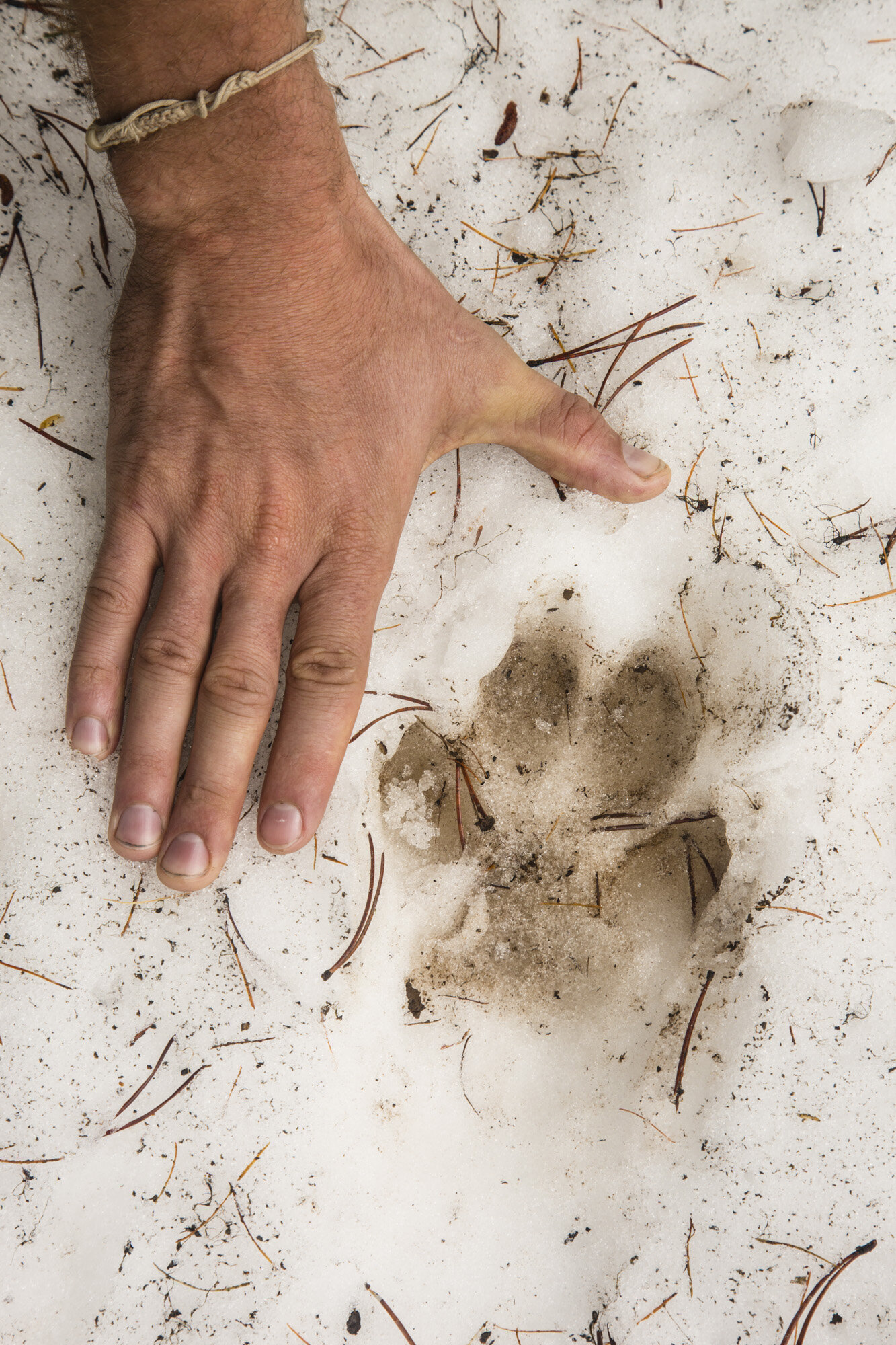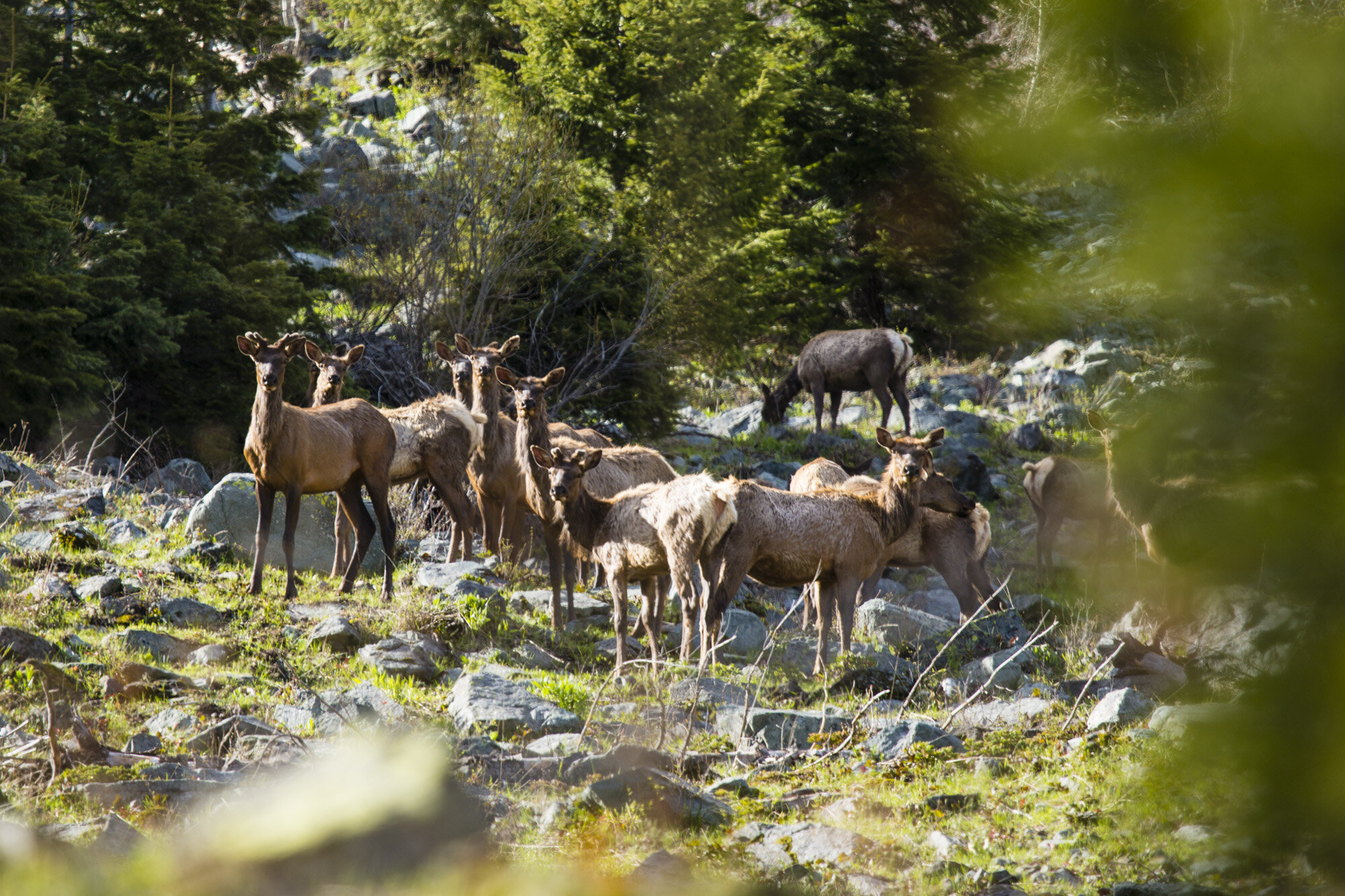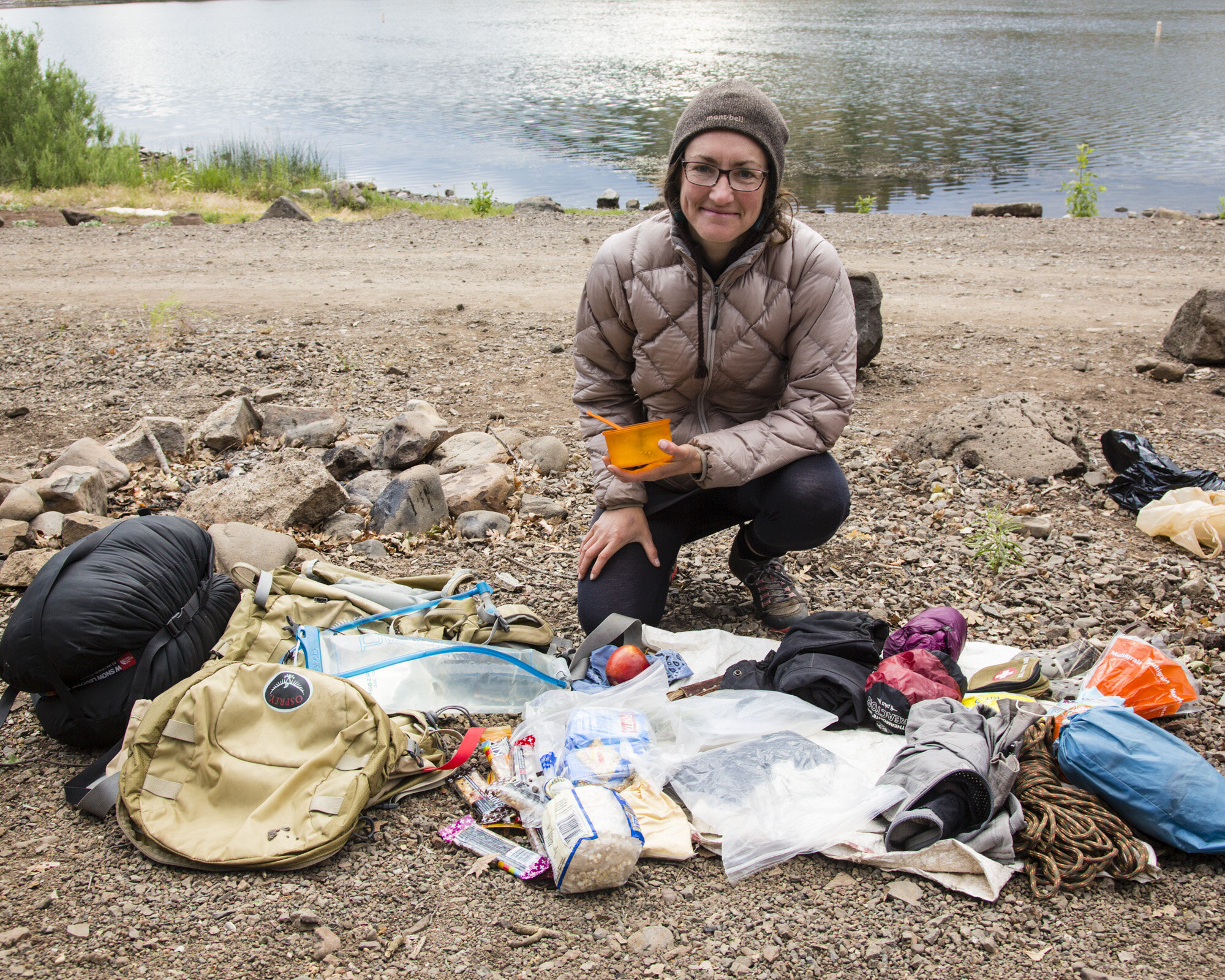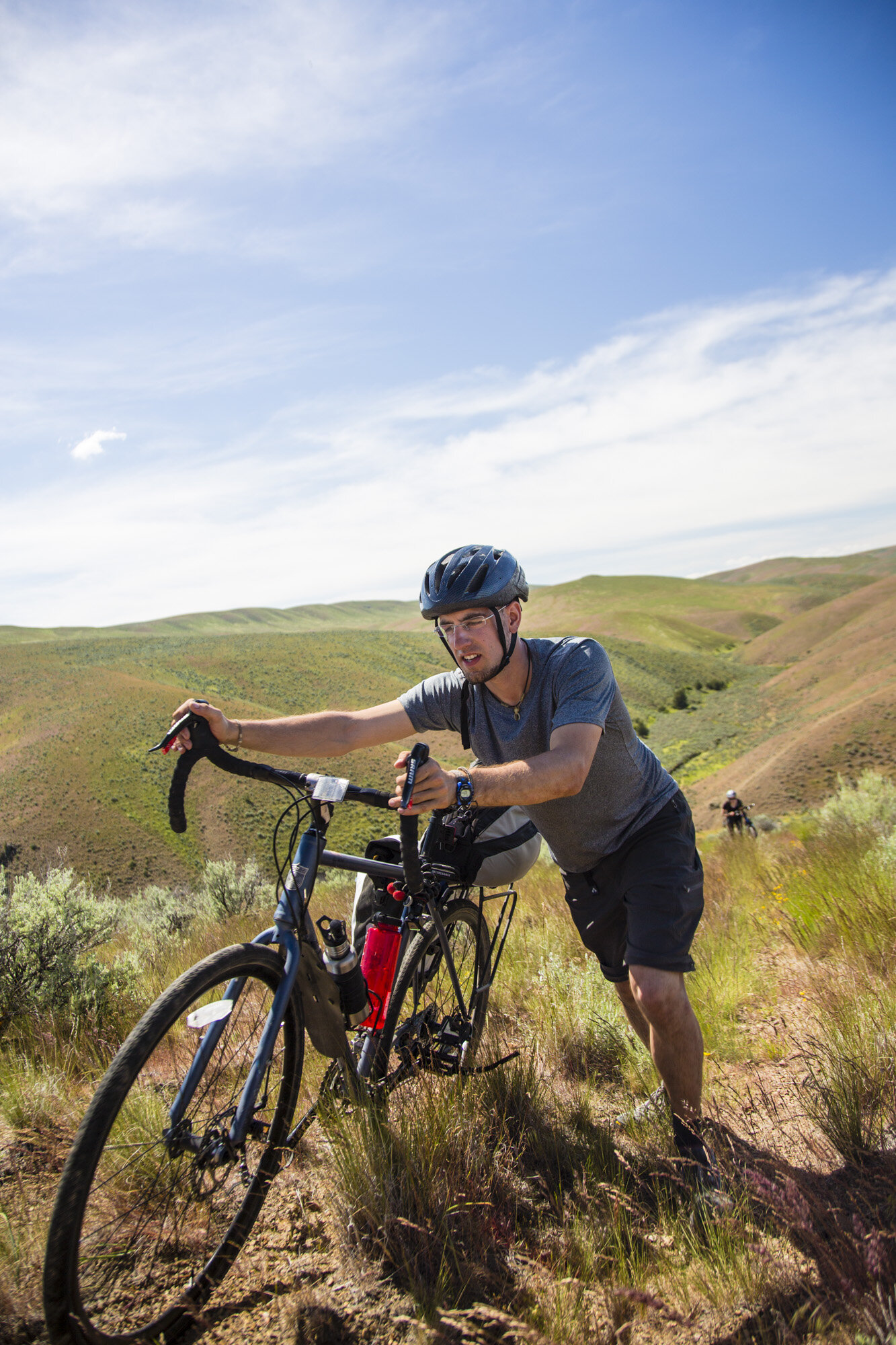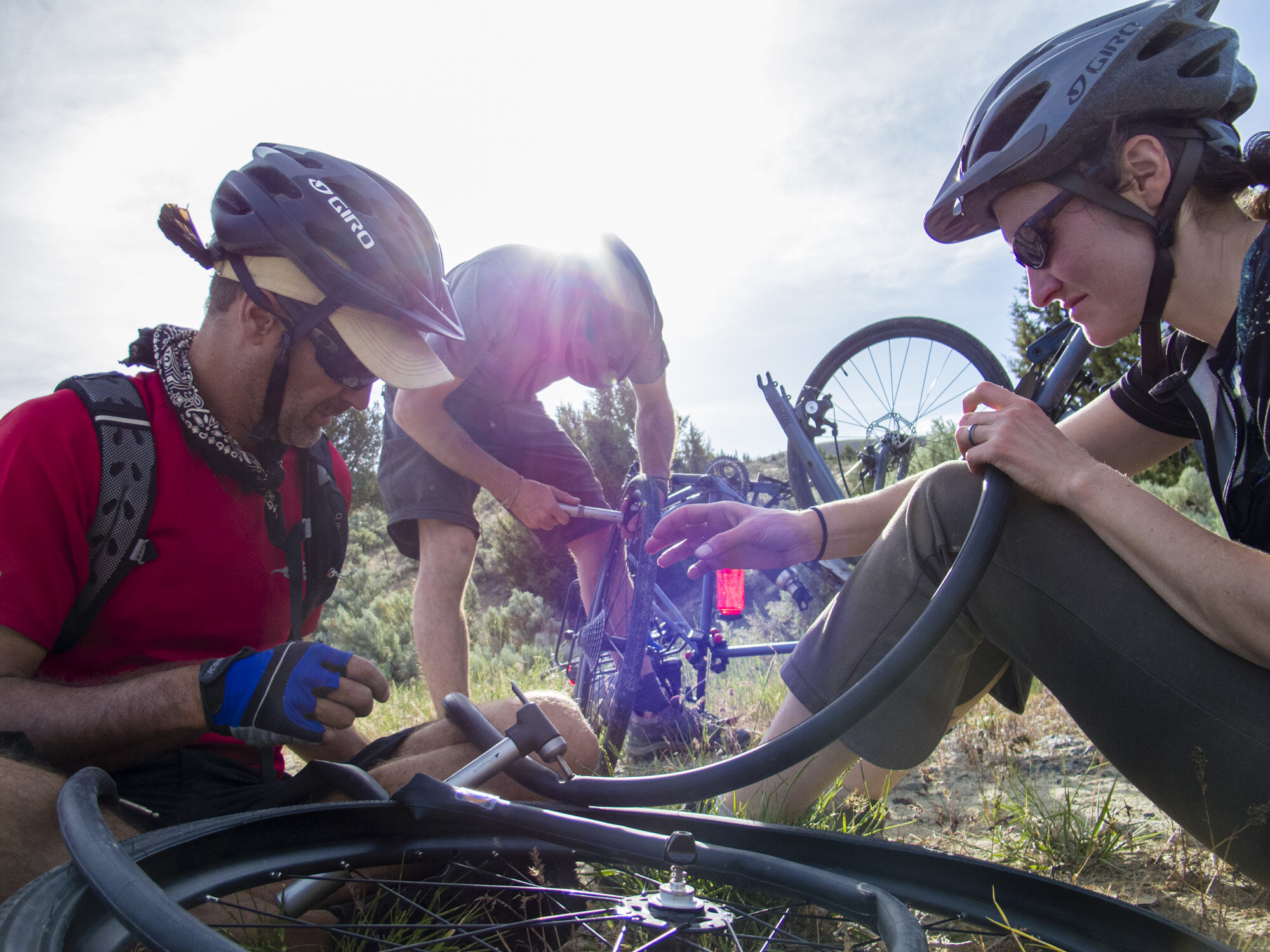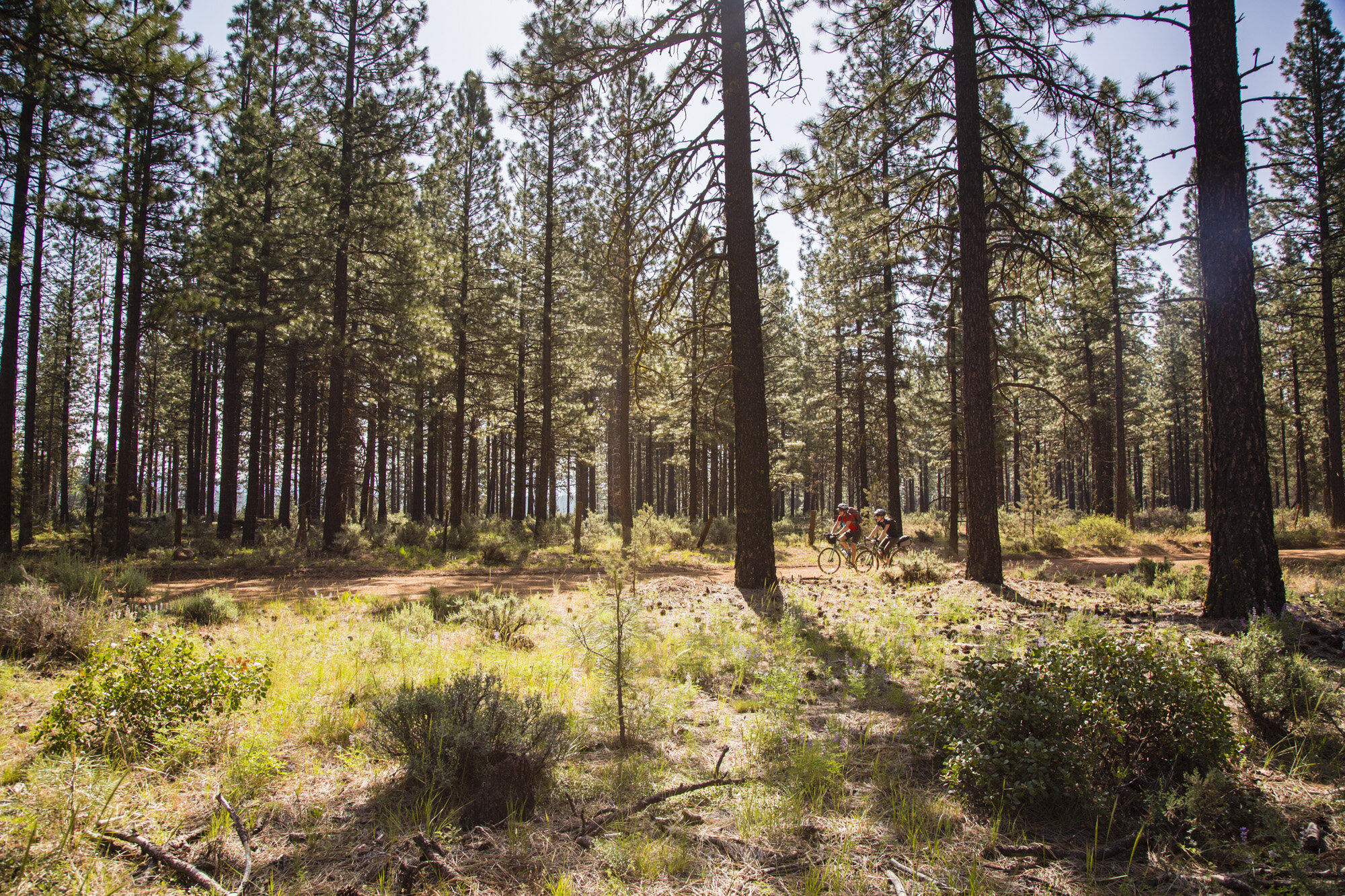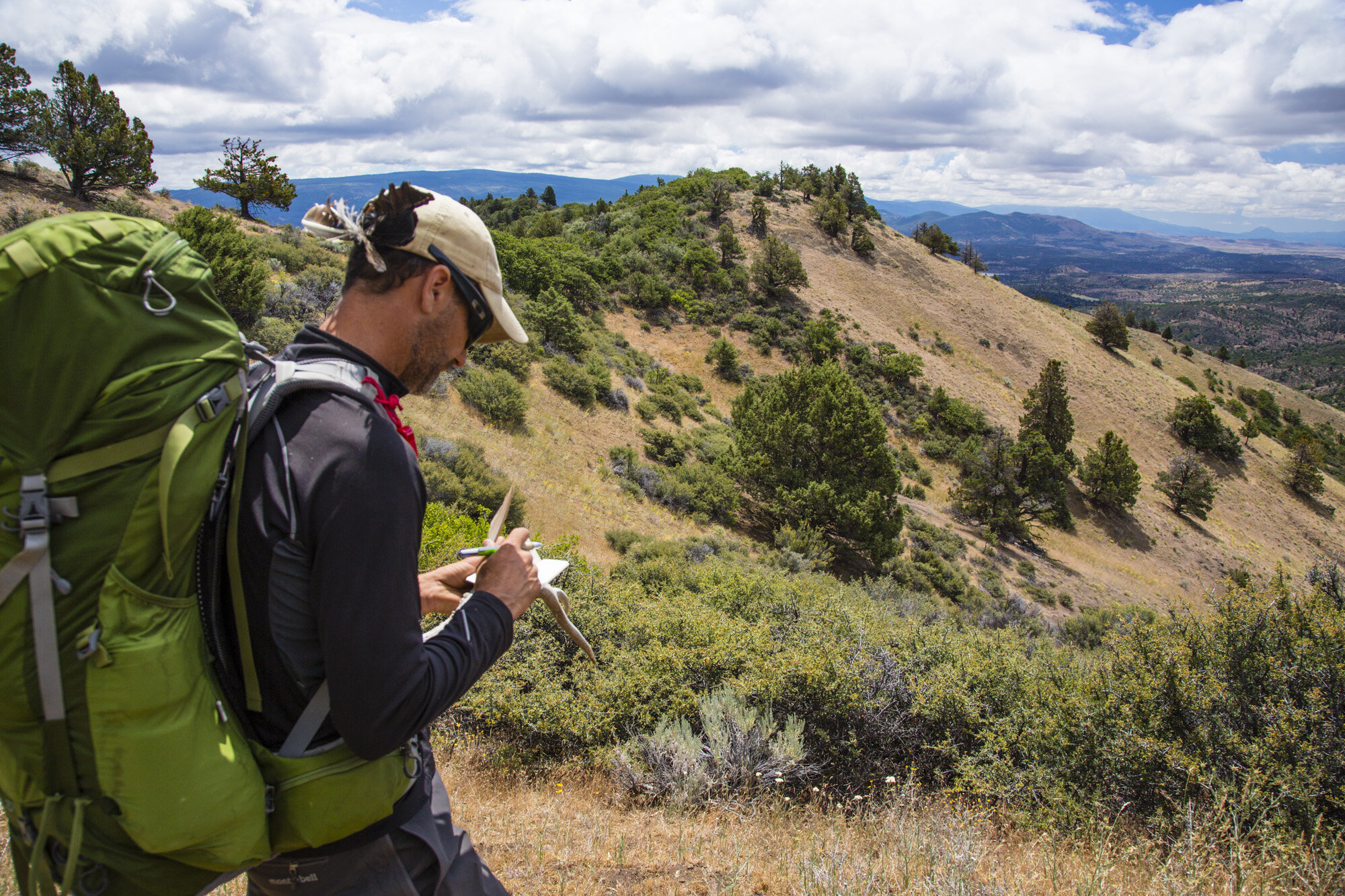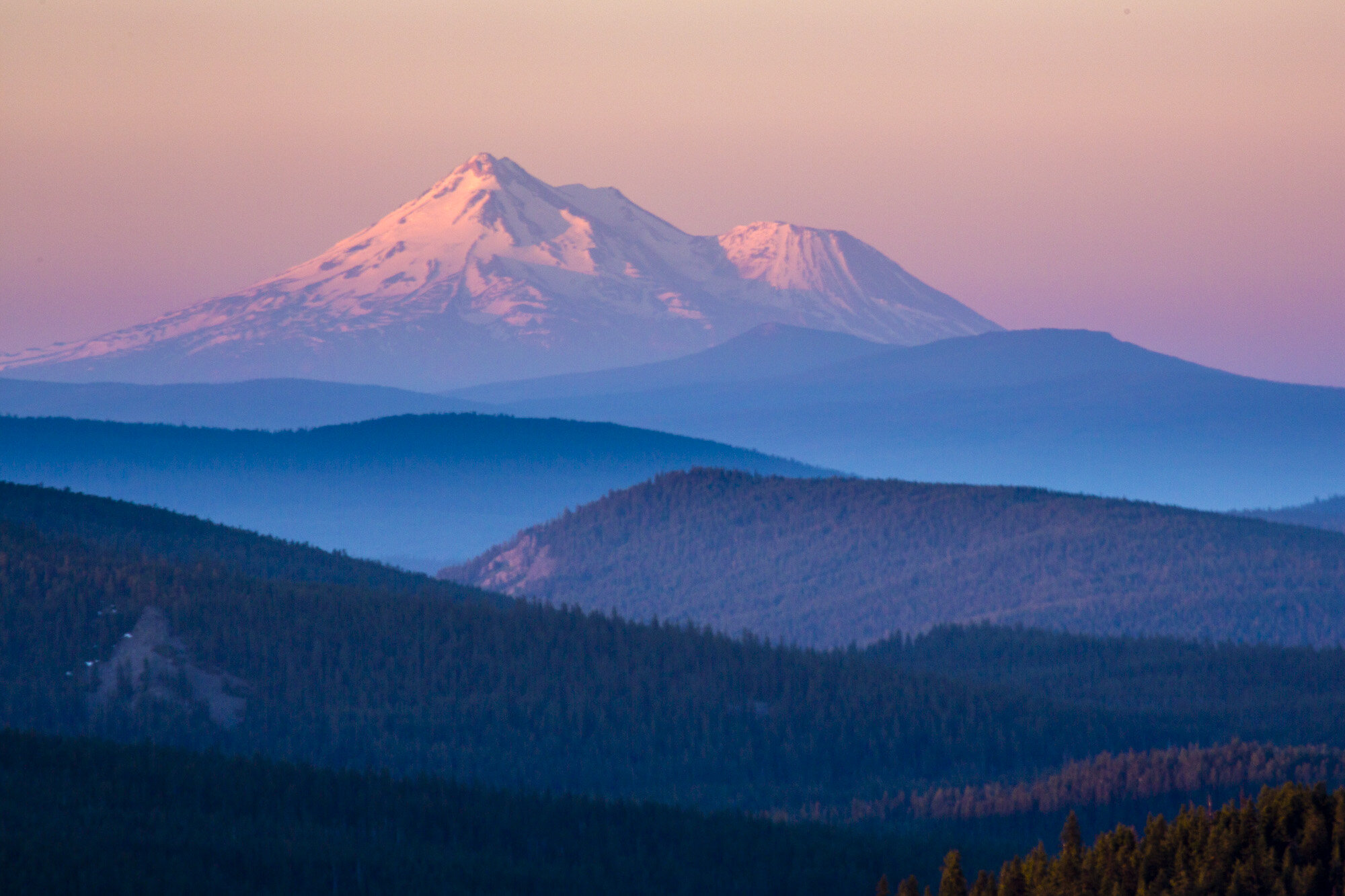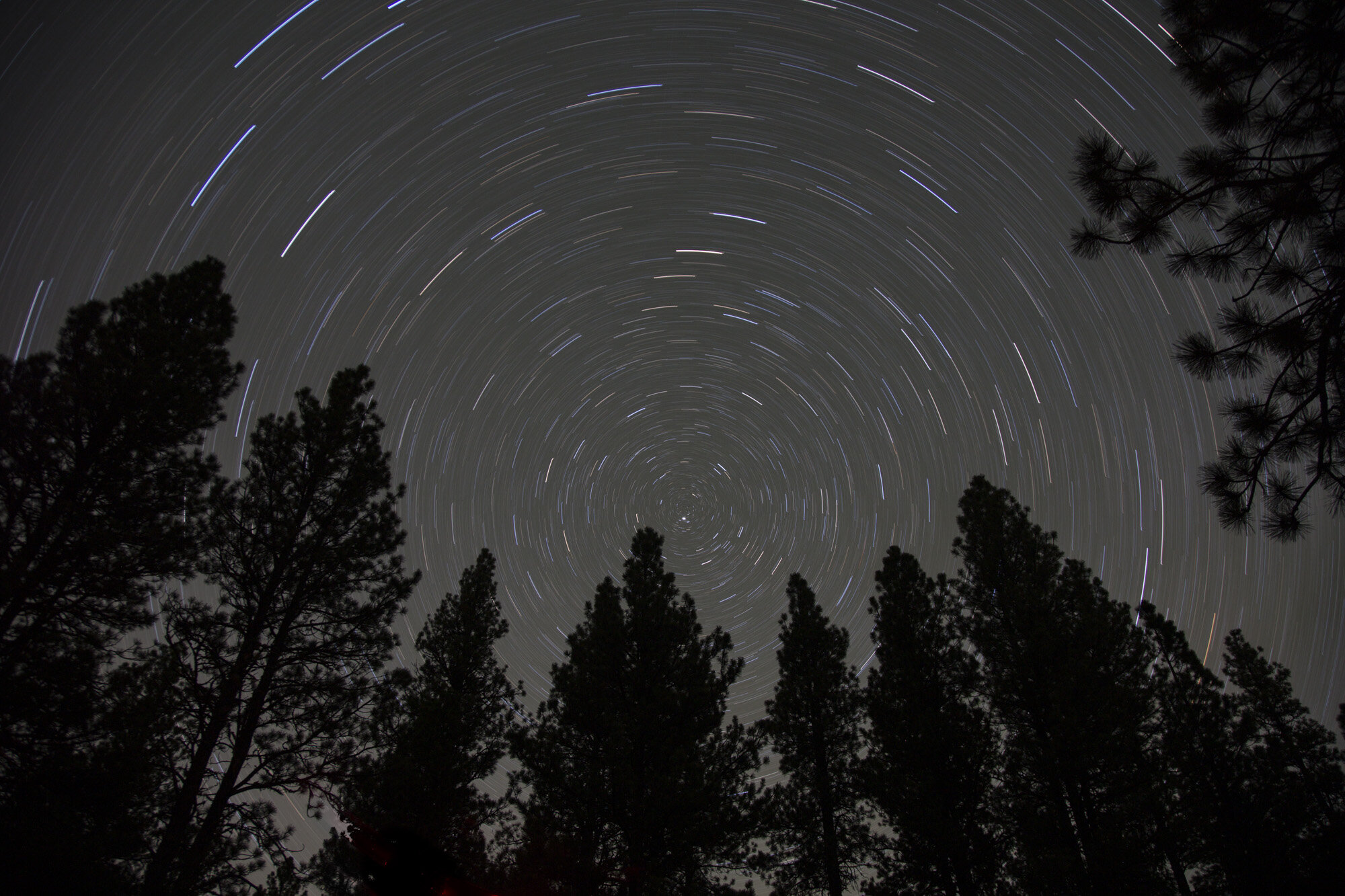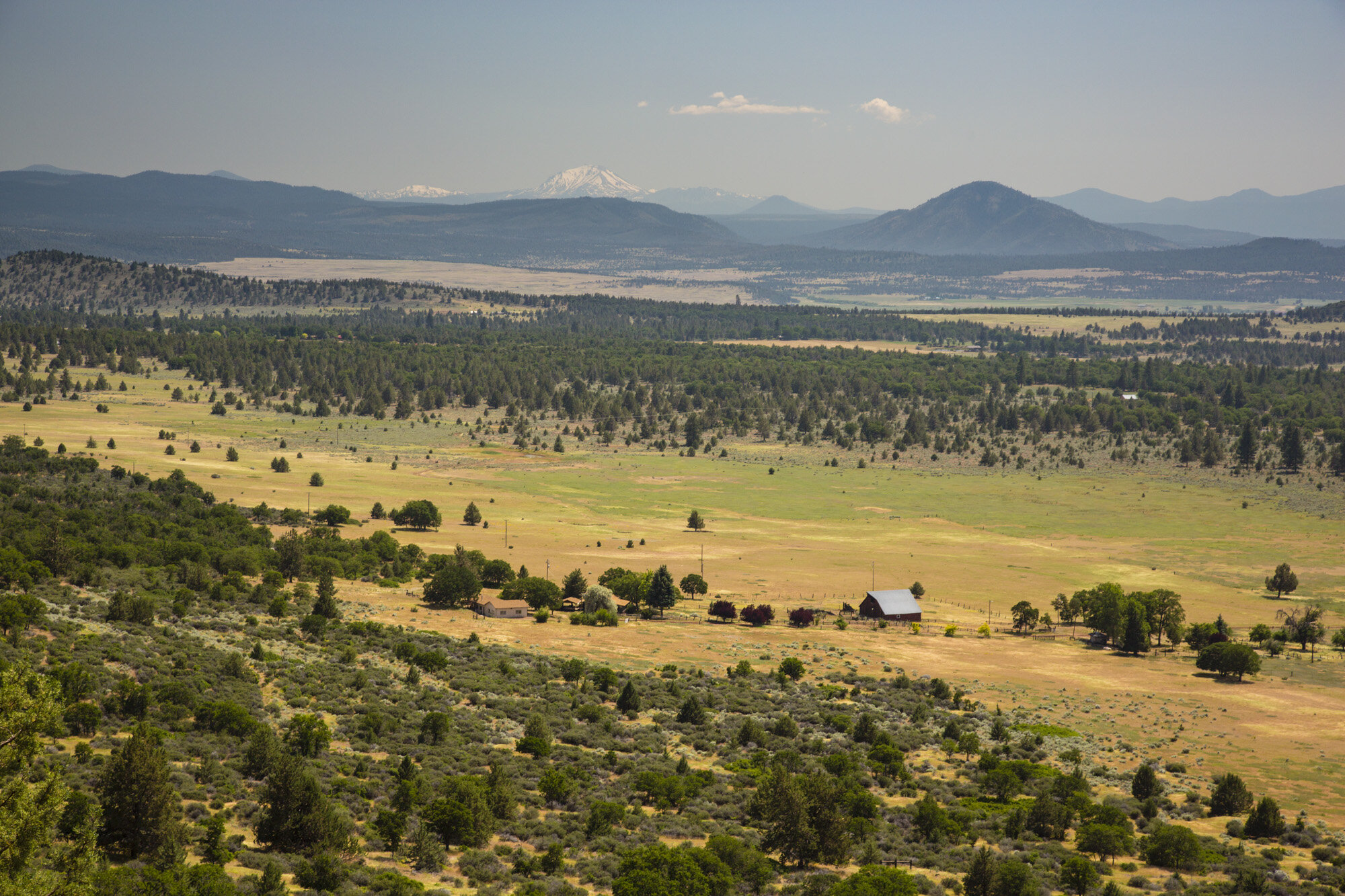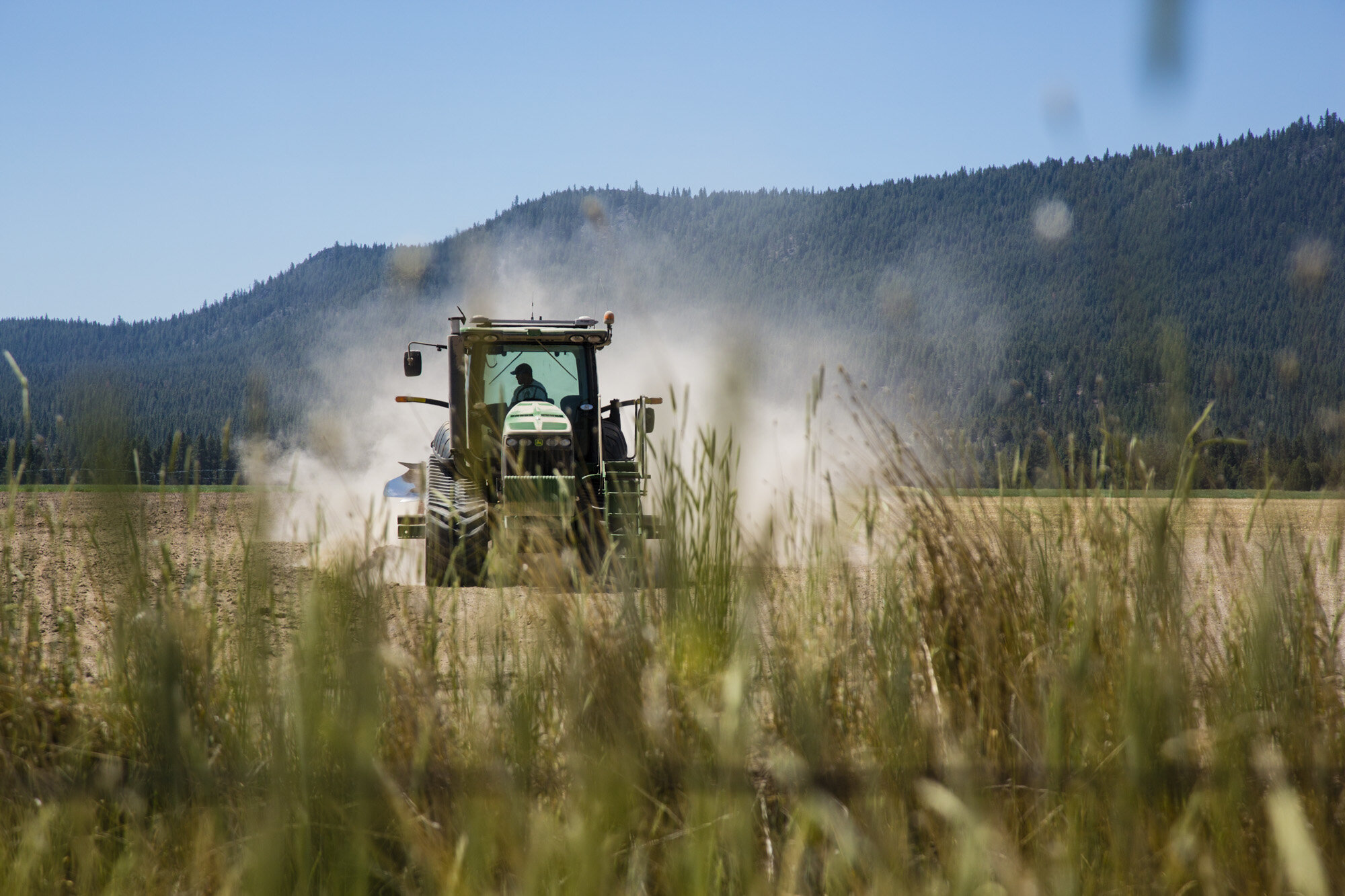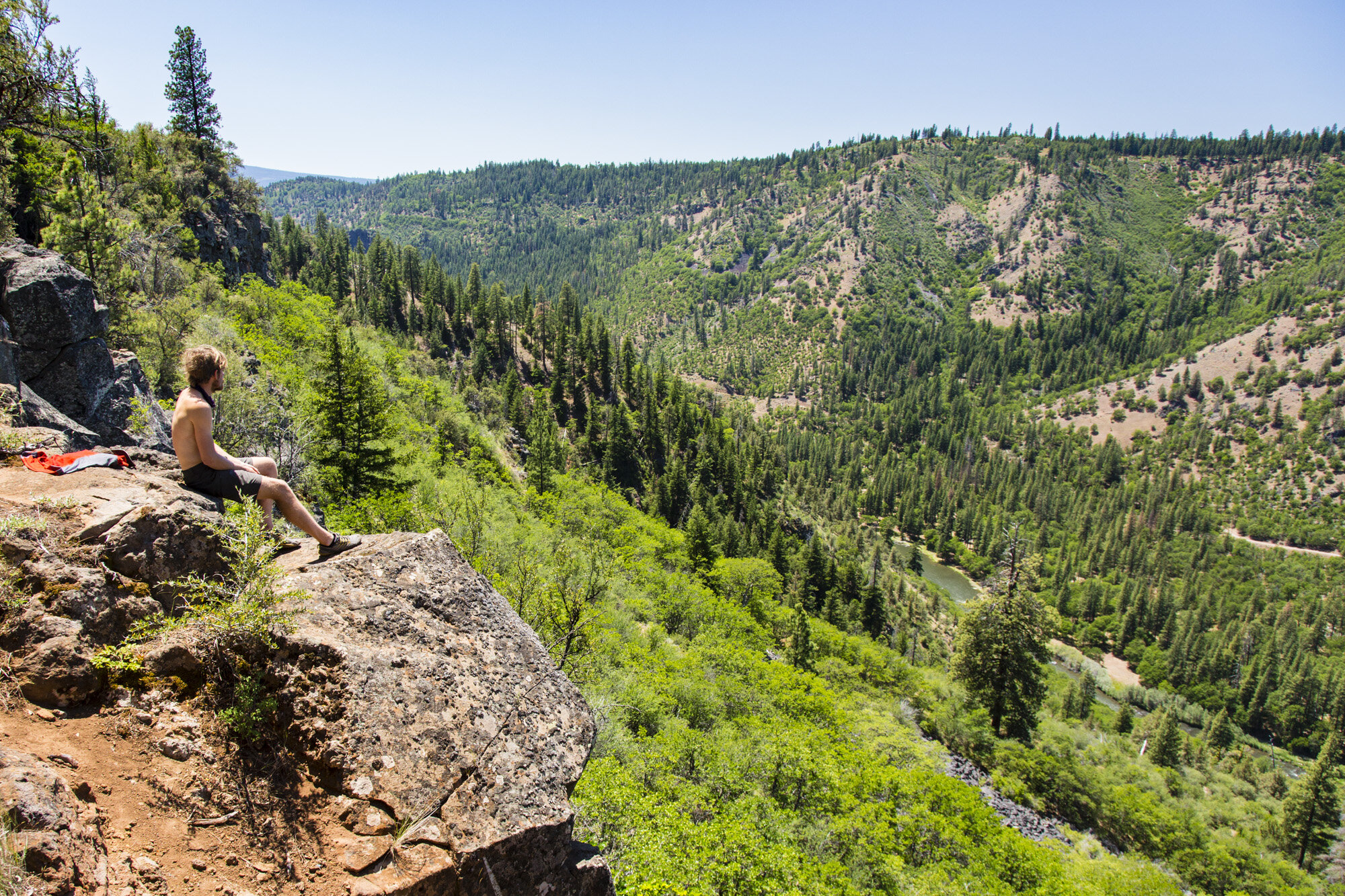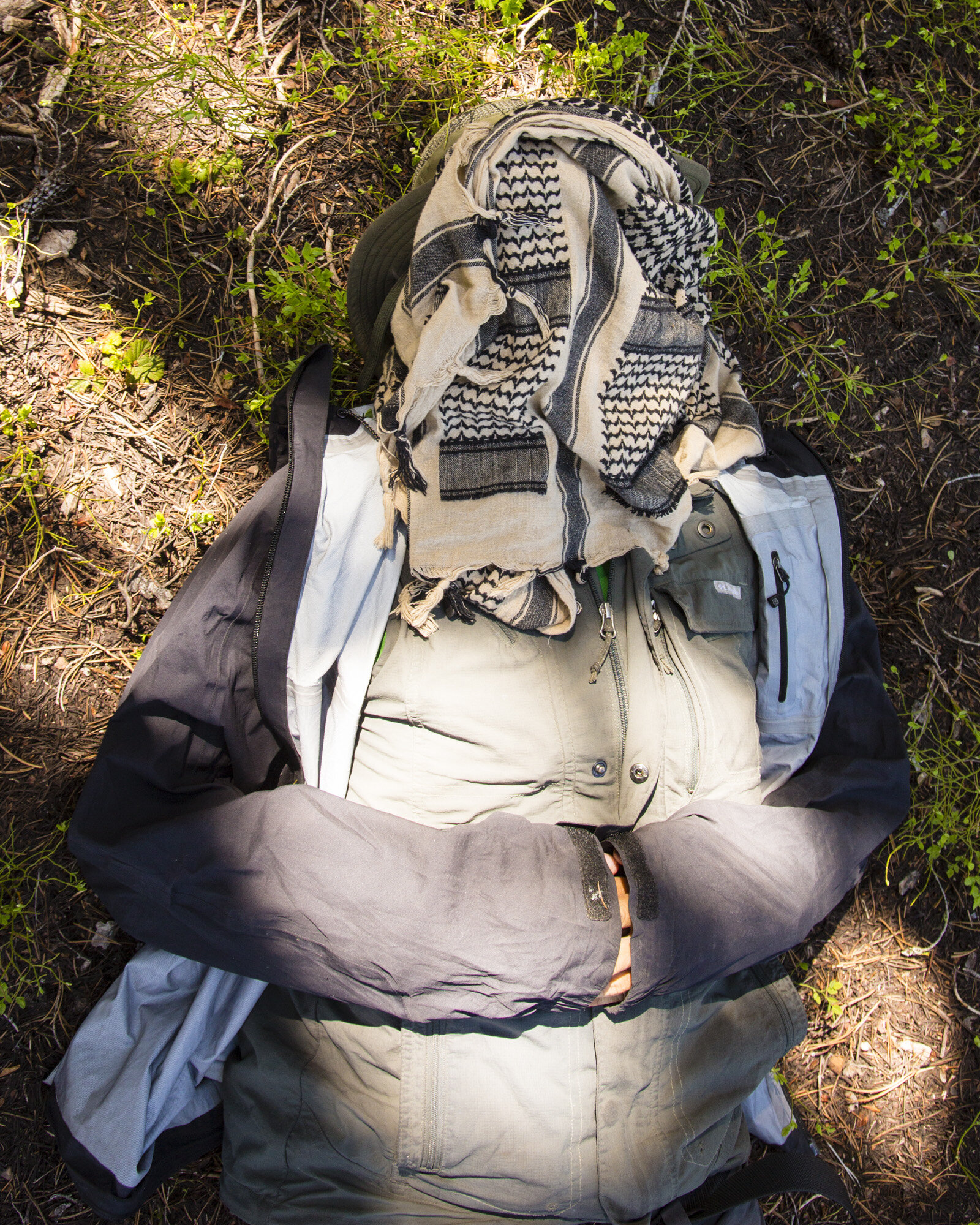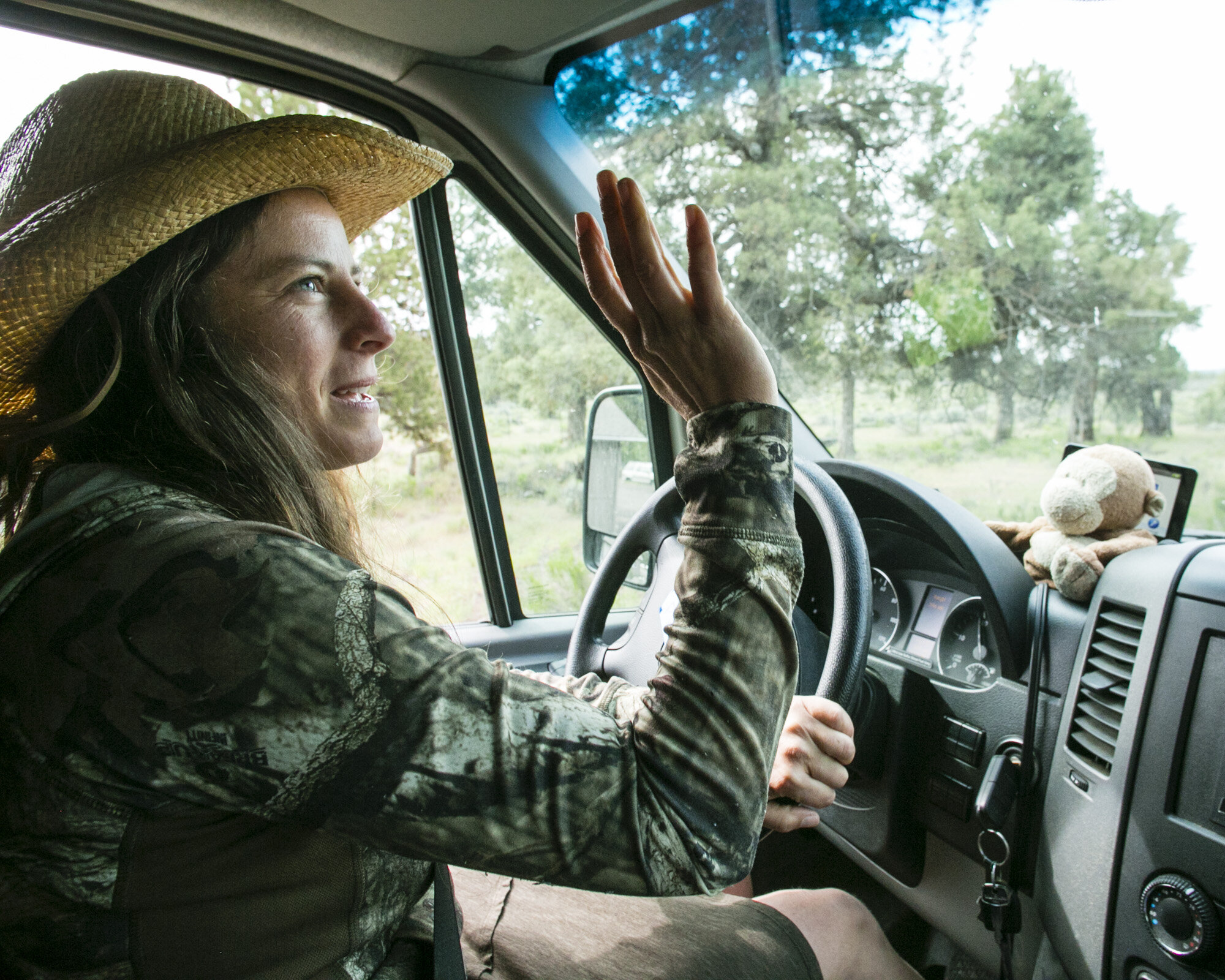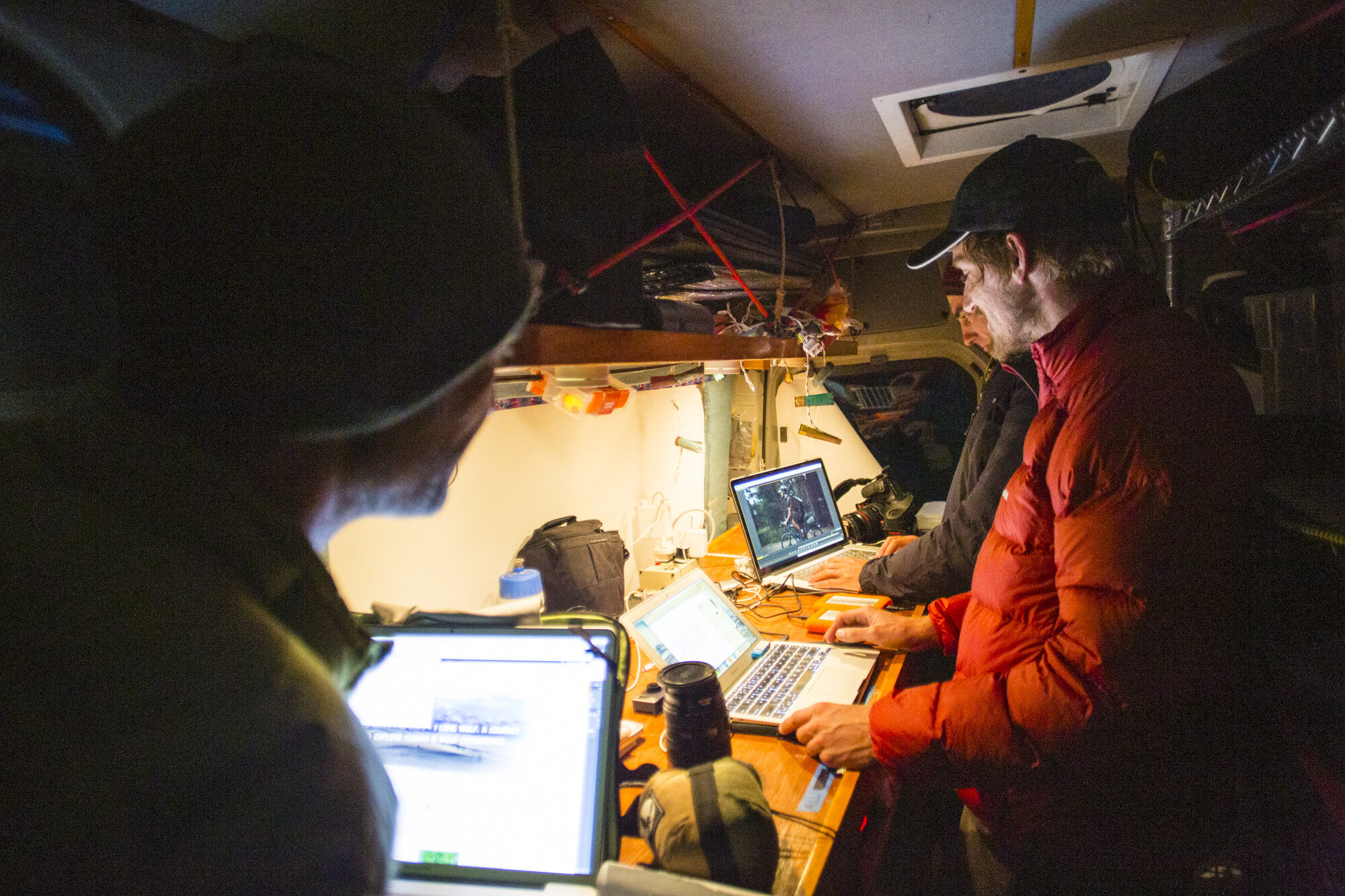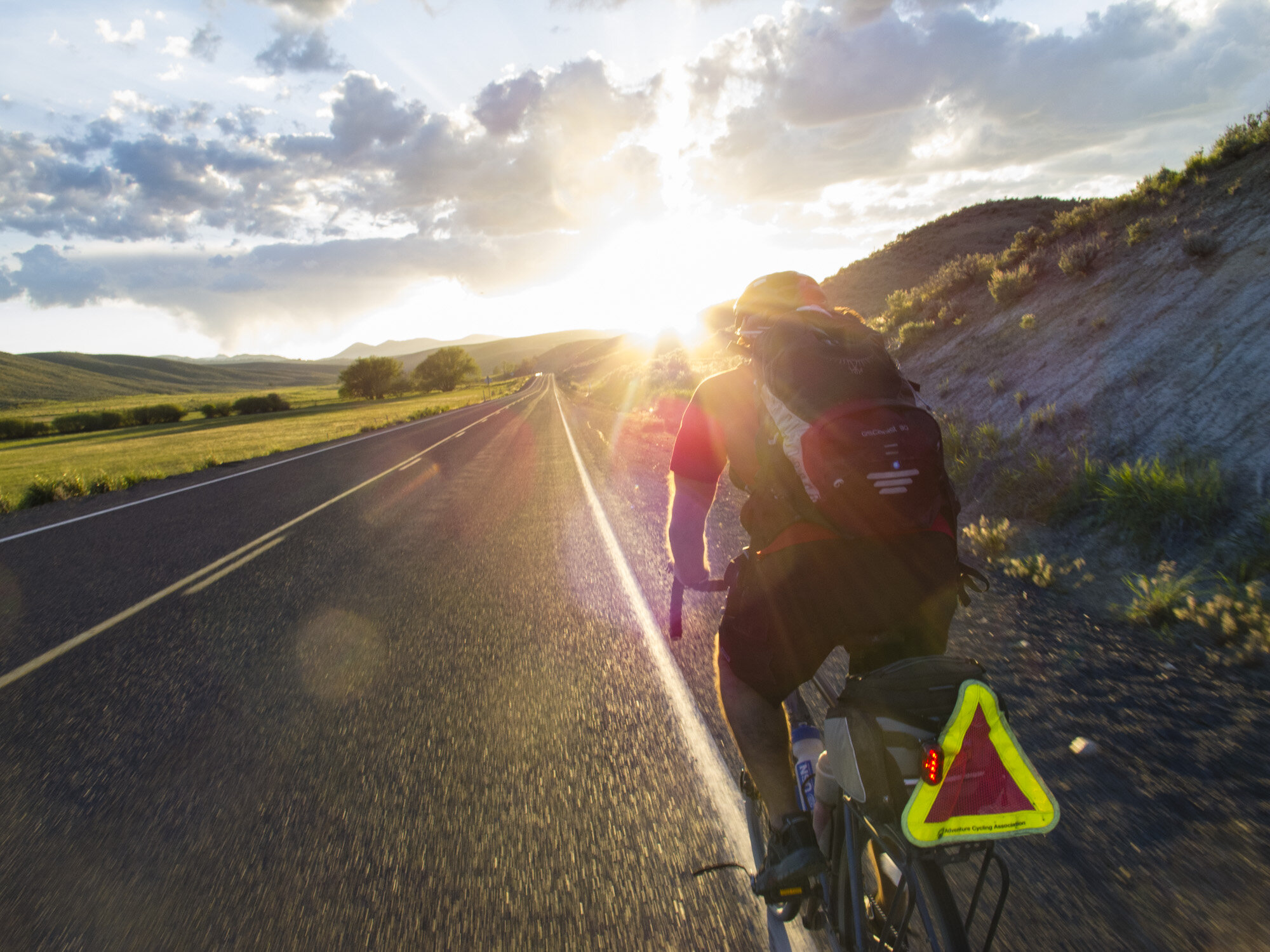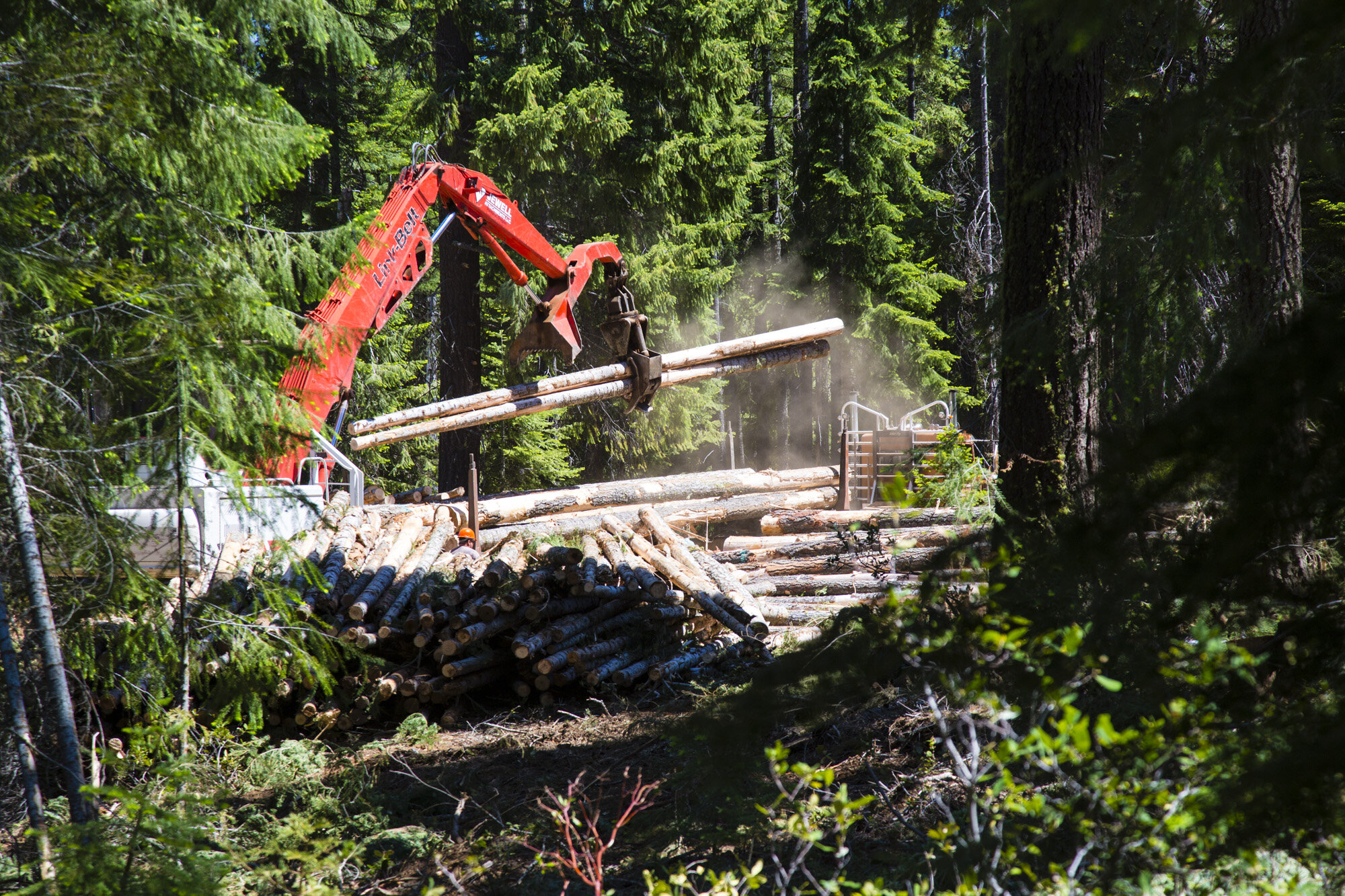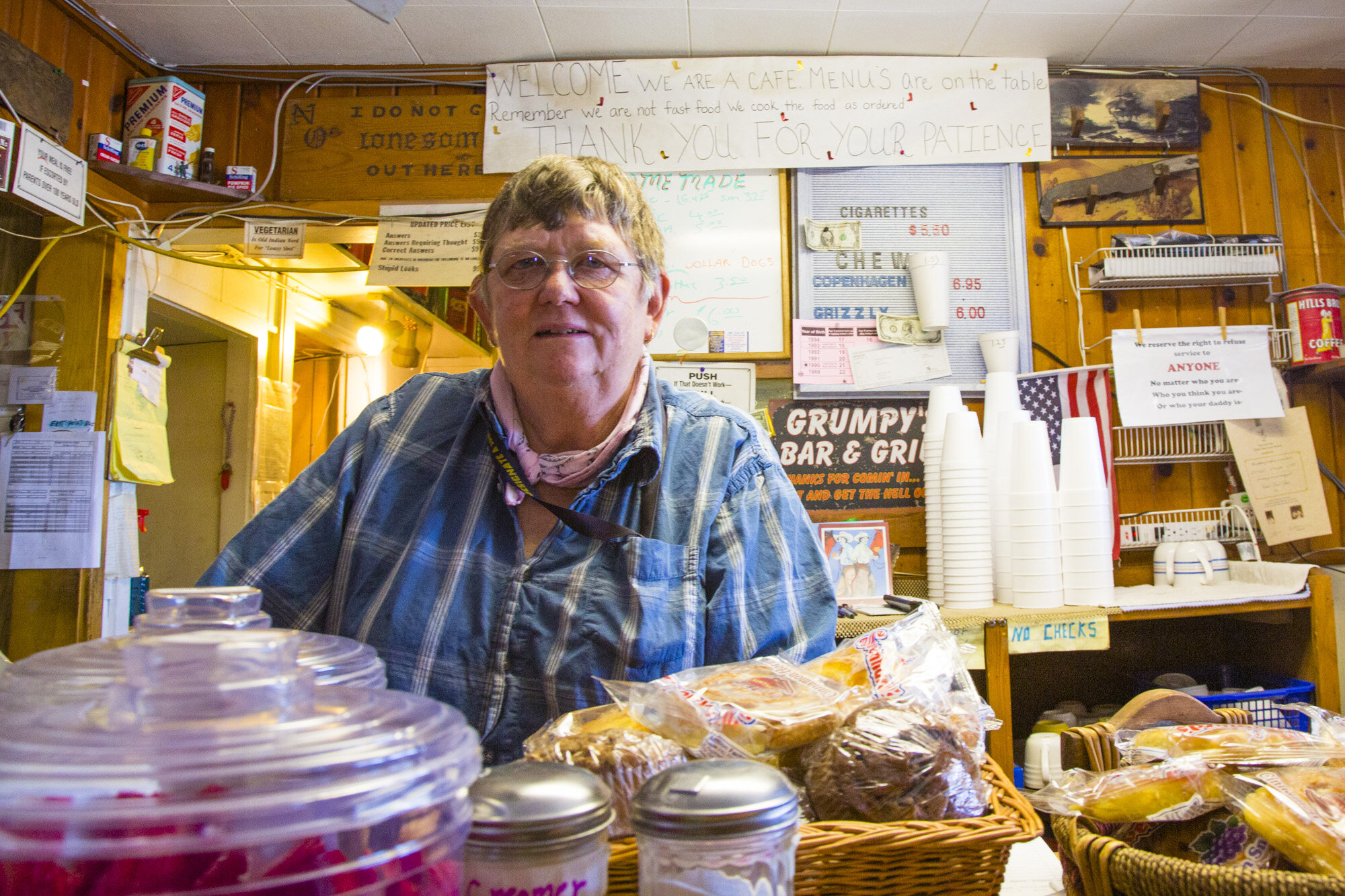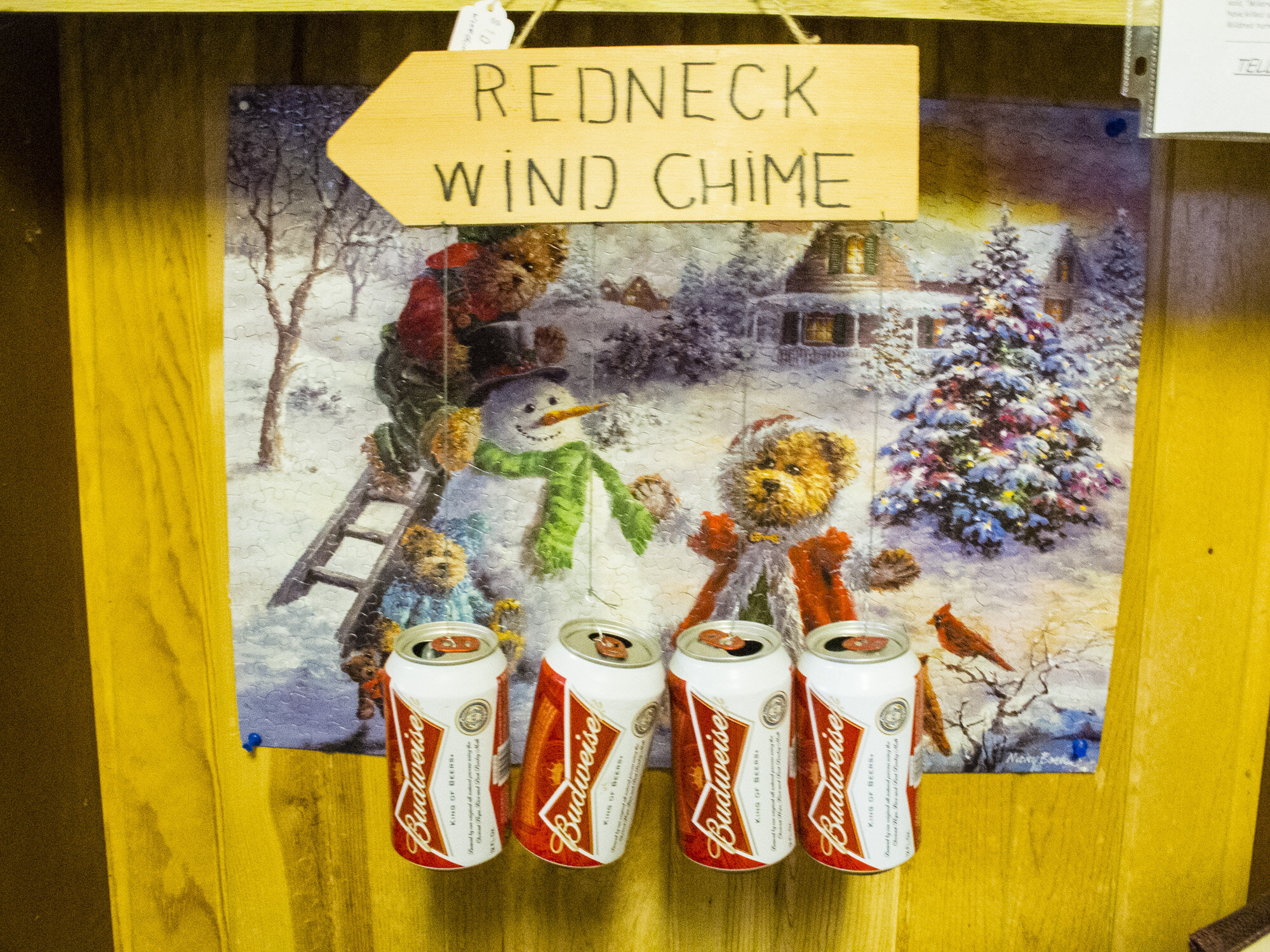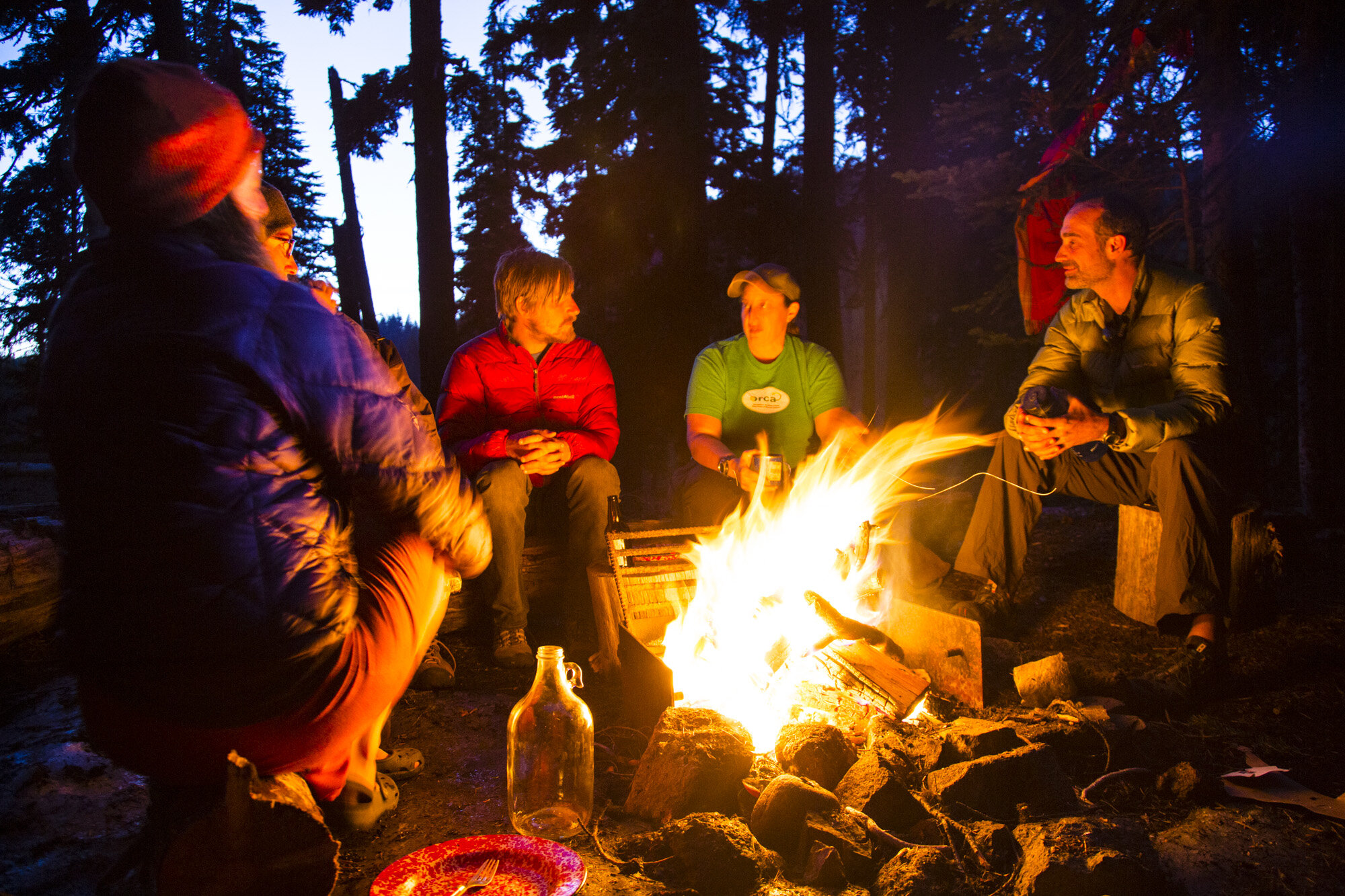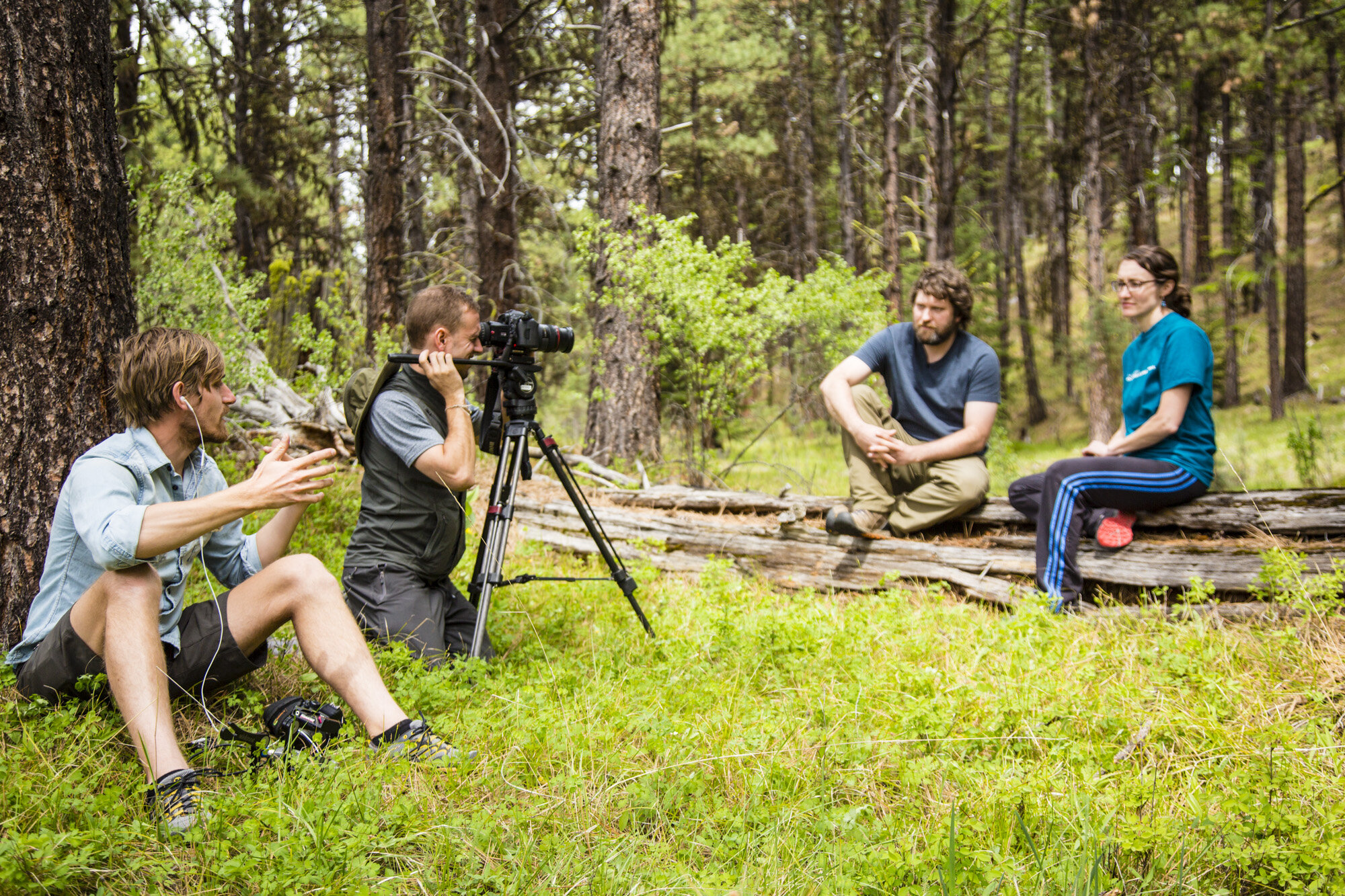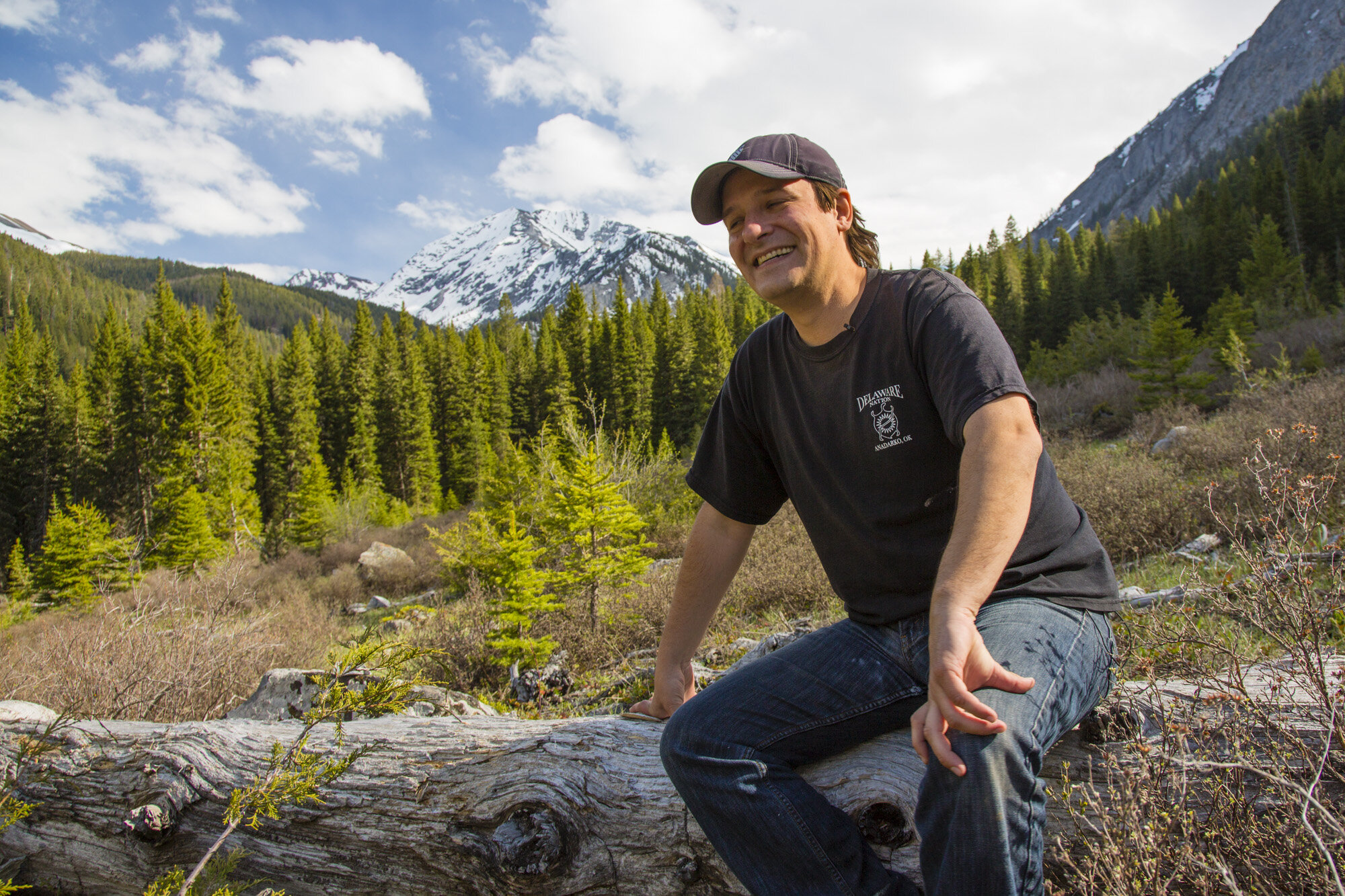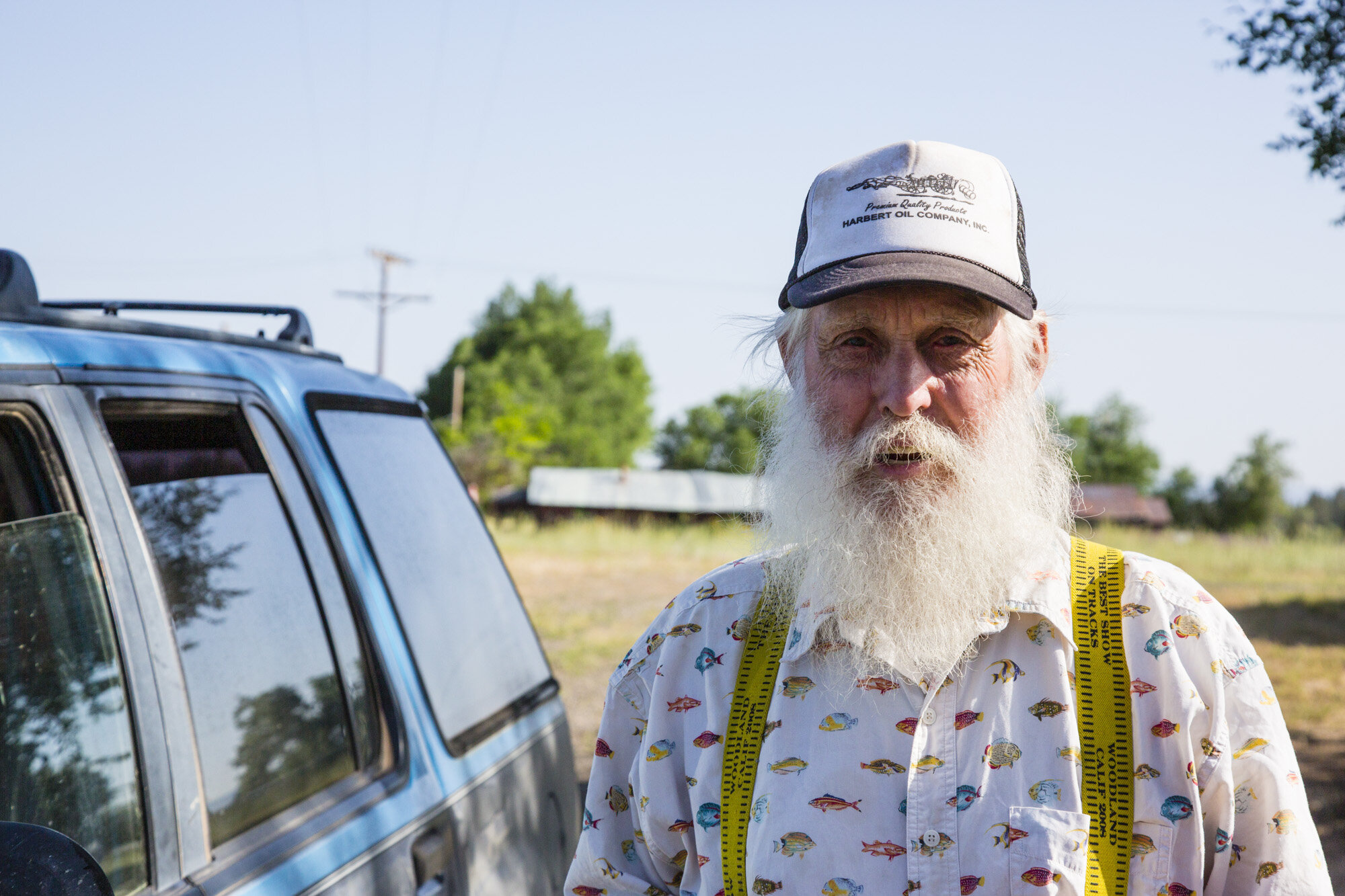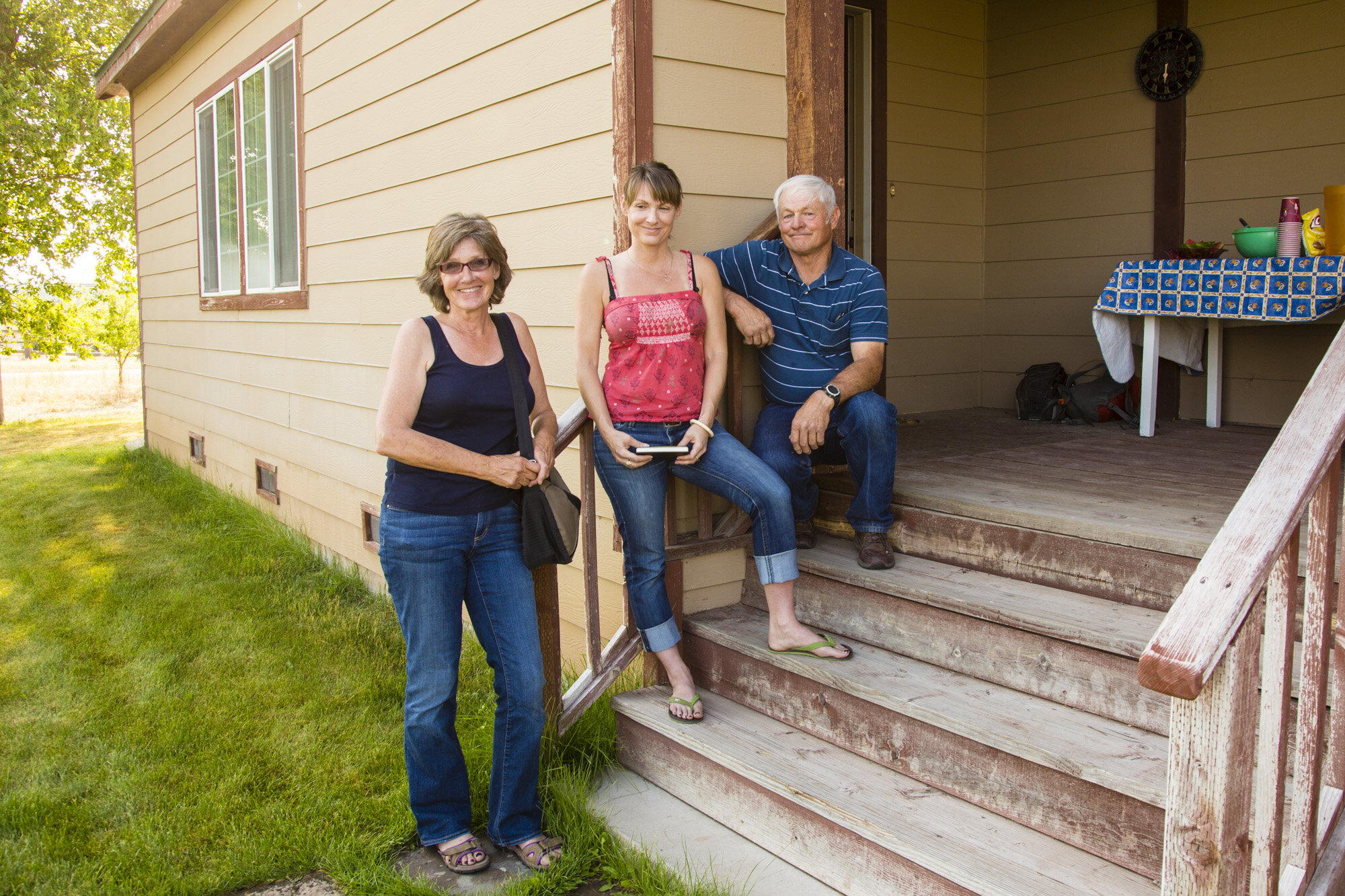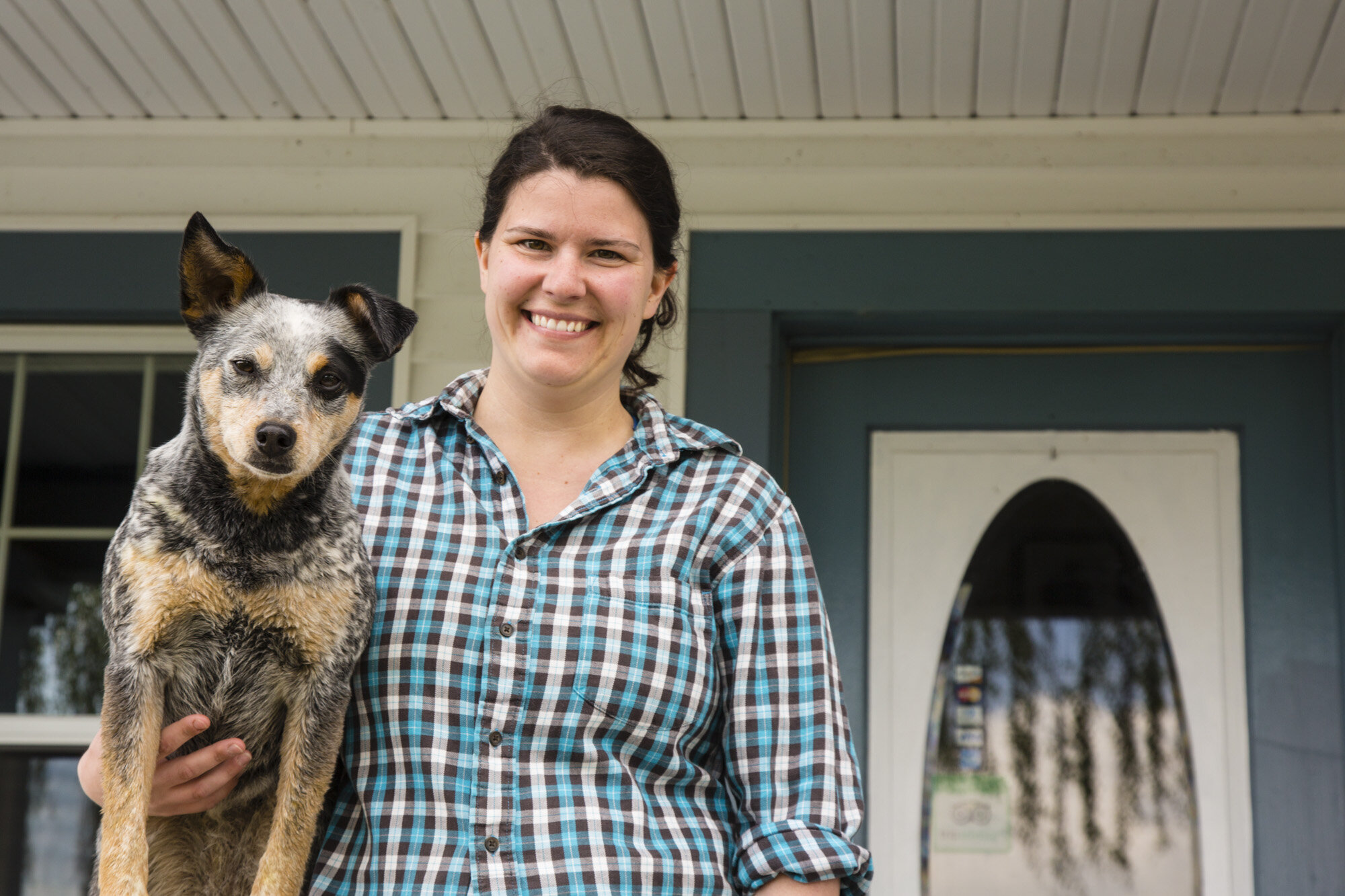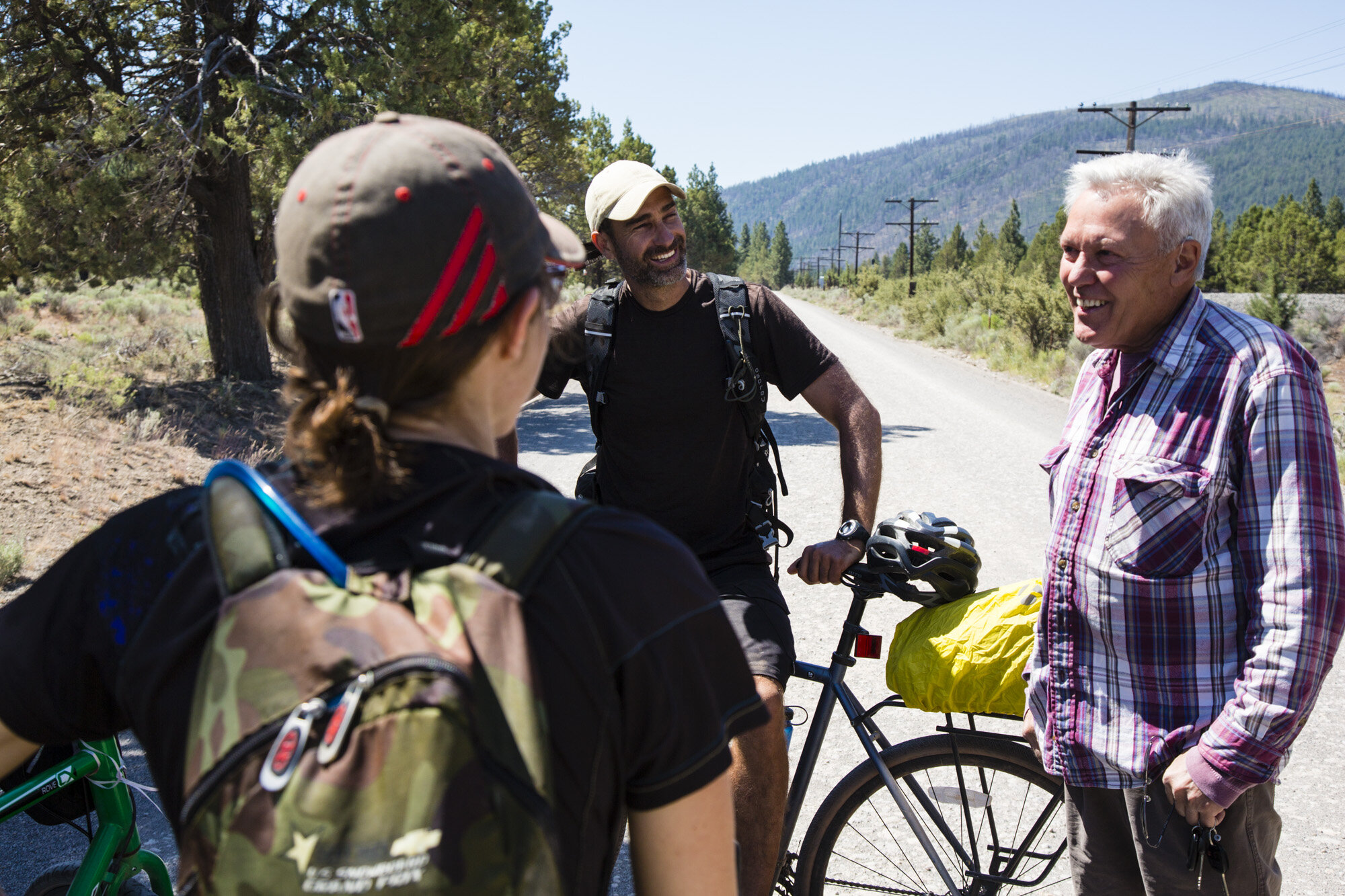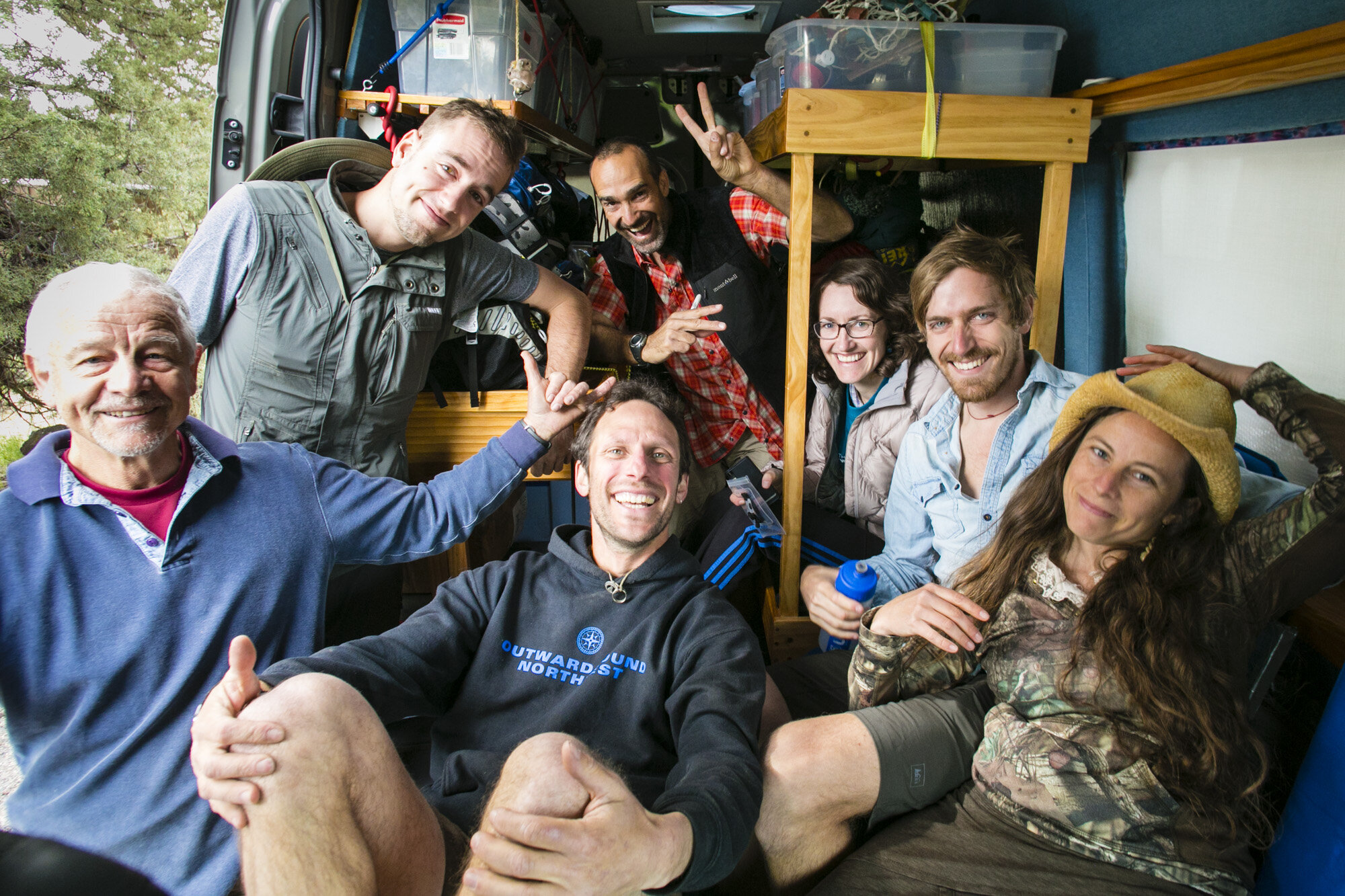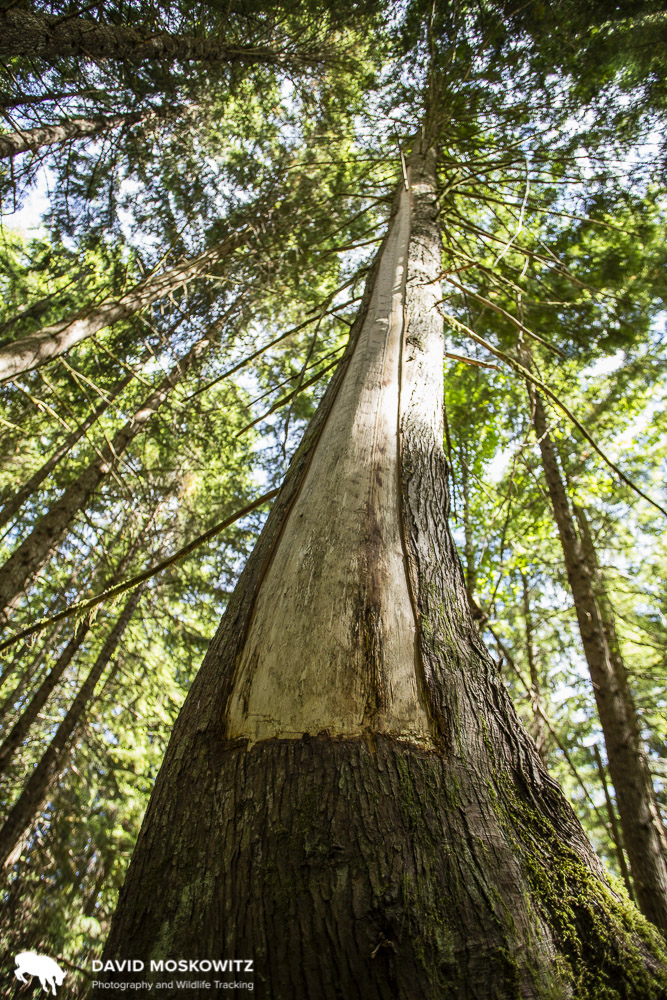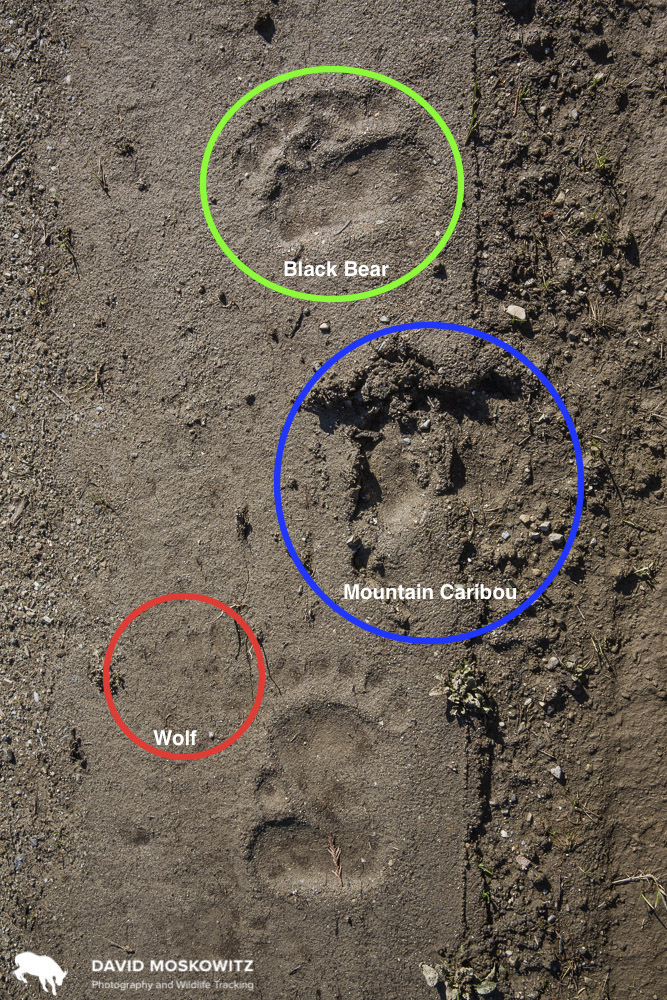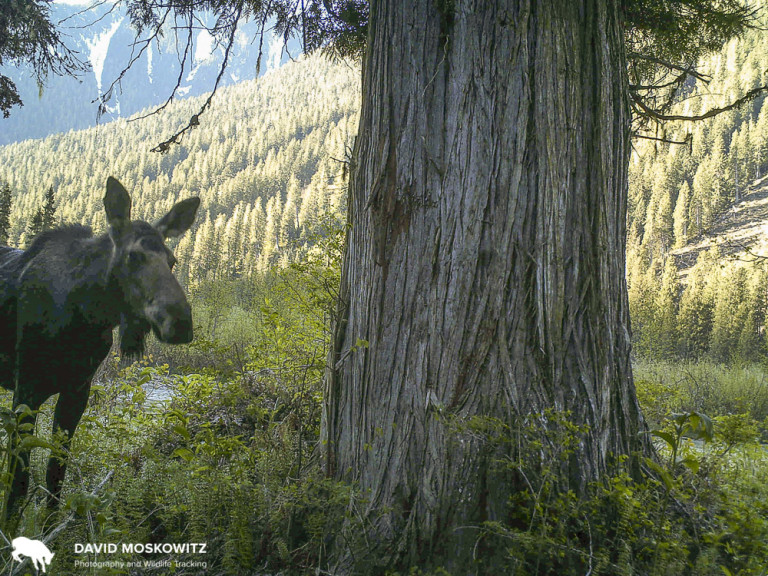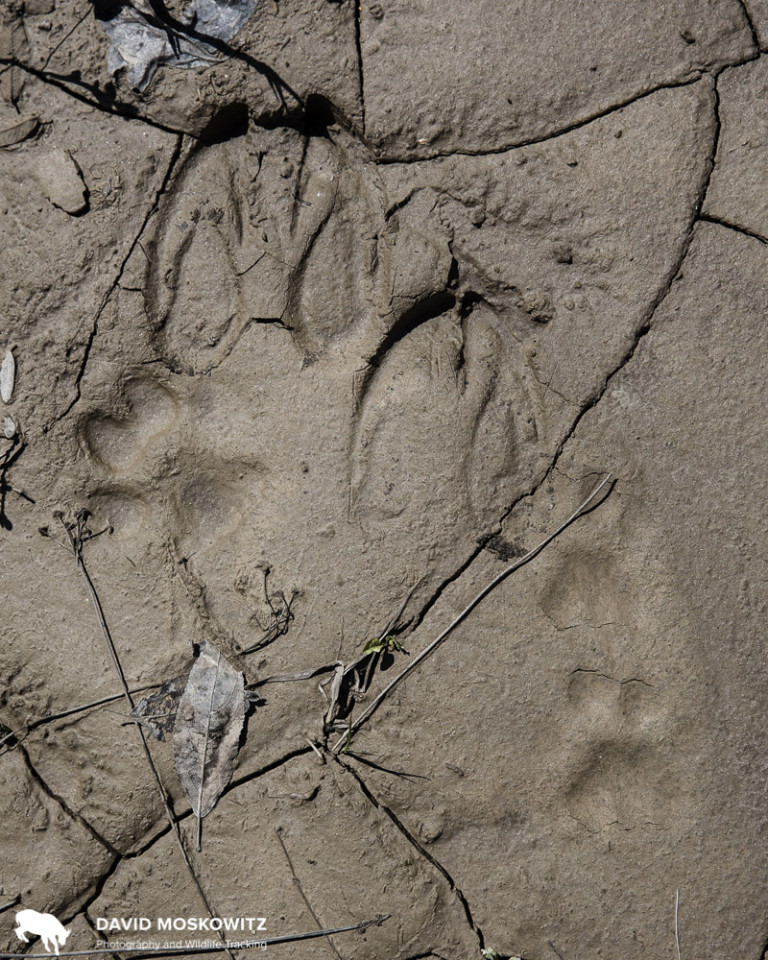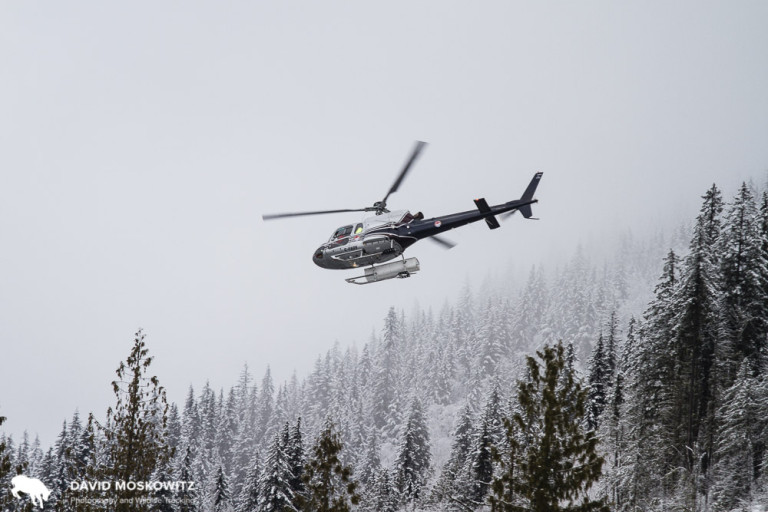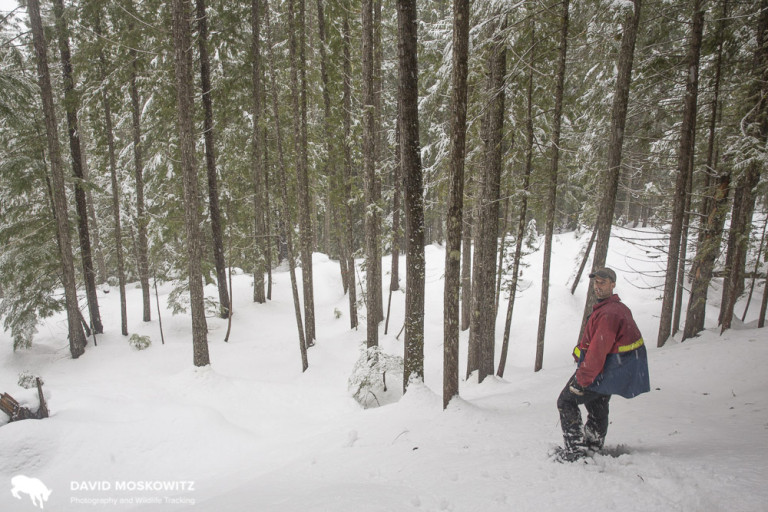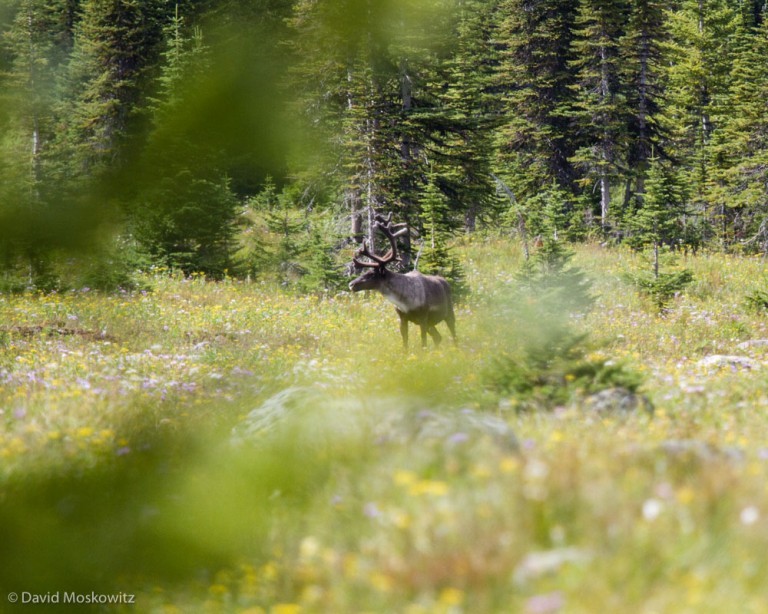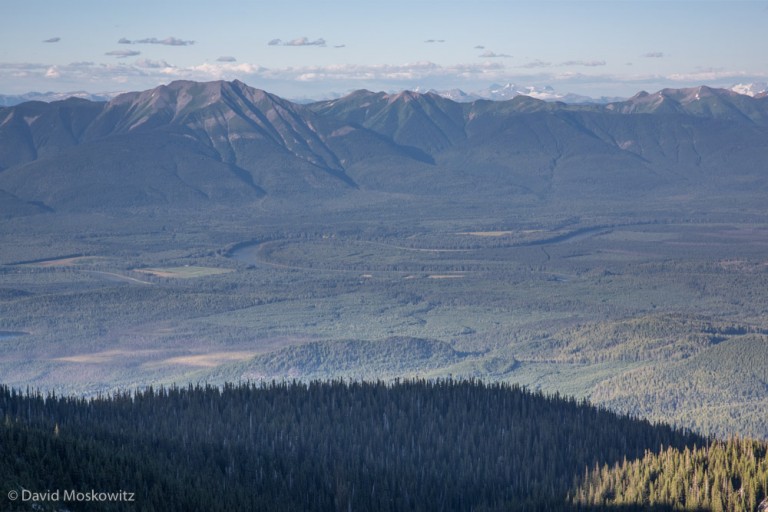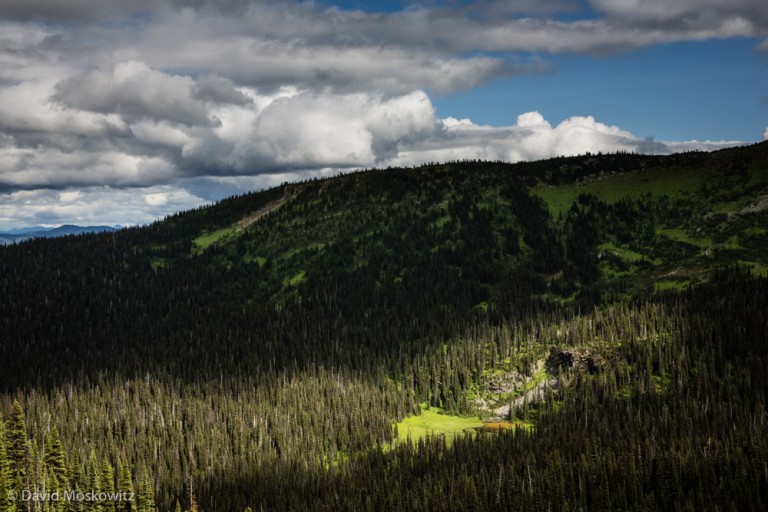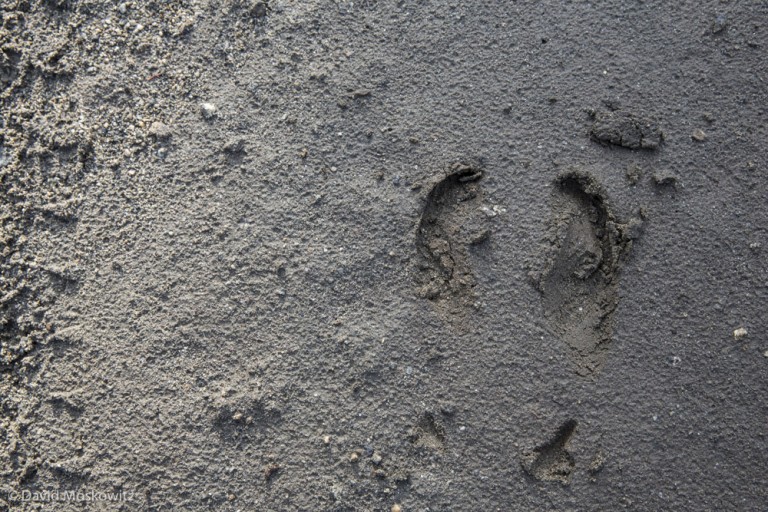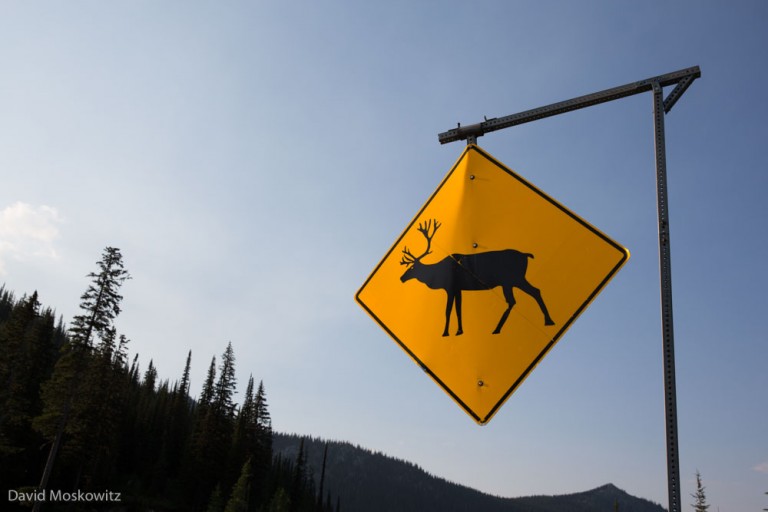OR7 Expedition Revisited
The Oregon Department of Wildlife recently announced that wolf OR7 has likely passed away over the winter. The news inspired me to go back and reflect on the expedition that I joined to retrace the steps of this animals amazing 1200 mile dispersal which took him from northeastern Oregon down into California and back into southwest Oregon.
In the spring of 2014, a team of 5 of us, supported by a dedicated logistics member, set out for over a month on foot and bicycle to retrace the route of OR7 in order to see the world that this 21st century wolf encountered. It had been nearly a century since wolves where last known to be present in most of the landscapes he traveled through and a lot has changed in 100 years.
Here are some photos from the expedition. Learn more about OR7, his journey and ours, at our expedition website: or7expedition.org where you can also stream the documentary we produced about the expedition and what we learned about human-wildlife co-existance in the modern world along the way.
Loss and Love in the Caribou Rainforest
Note: On October 25th I had the opportunity to participate in Ampersand Live: An Evening of Storytelling About People and Place, sponsored by Forterra, a land conservancy in western Washington. I had the honor to share the stage with a number of amazing Northwestern artists. With only five minutes to share stories and show images about the Caribou Rainforest, I thought about what I could share that would connect people with this place and the story of its inhabitants….these are my remarks from the evening.
Arctic Light in the Arrigetch Peaks, Brooks Range, Alaska
In July and August, I was part of a team of four people who made a mountaineering pilgrimage to the most northern mountain range in North America. The central Brooks Range (Gwazhał in Athabaskan) is the traditional territory of the Inupiaq-speaking Kuuvanmiit and Nunamiut people and the Athapaskan-speaking Koyukon. Today, the landscape we visited is in included in Gates of the Arctic National Park.
Forest McBrian, Steph Williams, Drew Lovell and myself spent 3 weeks exploring the Arrigetch Peaks region which comprises two drainages of the Alatna River. My first trip to the Arctic, learning about the beautiful long and low light of summer in the far north was amazing as a photographer. Here are a few shots celebrating the season of light in this expansive and wild mountain range.
Cascades Wolverine Project
I am excited to be starting a new collaboration this winter right in my own backyard here in the North Cascades. Cascades Wolverine Project is a grassroots effort to boost winter wolverine monitoring in the North Cascades, capture engaging images of this elusive mountain carnivore, and leverage the skills of winter backcountry recreationists as wildlife observers and alpine stewards. Learn more about the project on our website cascadeswolverineproject.org, or follow along on instagram at @cascades_gulogulo We currently have 6 camera trap installations set up on the eastside of the North Cascades for the winter and have completed our first camera check of the season. No wolverines yet but we did get some fun photos of other North Cascades critters! Along with running camera monitoring stations we will be working on developing more opportunities for backcountry skiers to get more involved in wolverine conservation in the North Cascades!
Project leader Steph Williams having absolutely NO FUN during our field work. Follow Steph on instagram at @stephwilliams9010.
Field Notes: Winter in the Monashee Mountains
Photos and text by David Moskowitz. Expedition partners: Steph Williams and Forest McBrian.
A Fruitless Search For Caribou
We go to the mountains searching for answers. We go to the forests looking for clues. We watch the clouds roll across the peaks, keen to see what the universe will deliver on the wind. We scan the snow for the tracks of elusive creatures of the wild wonder about their lives when we find them and their absence when we don’t.
Back home, developing images of stark landscapes Carved by forces beyond our comprehension Turned to black and white and every shade of grey in between. Their is a haunting beauty in precarious landscapes Unsettled times What’s missing from our maps? What’s hidden in the clouds? When will these mountains come tumbling down?
Mountain Caribou Initiative: Camera Trapping for Carnivores
Text and photos by David Moskowitz Caribou are not the only animal tough to track down in the Caribou Rainforest ecosystem. As part of our efforts to tell the story of all of the creatures that call these mountains home, I have been setting camera traps this winter in collaboration with Swan Valley Connections in northwestern Montana and the Yellowstone to Yukon Conservation Initiative in the panhandle of Idaho this winter to capture images of some of the rare and elusive carnivores that depend on this wild landscape. Here are a few images from this winter field work and some out-takes of images from the camera traps.
Anything unusual about this snowmobile packing job? Researchers in Idaho and Montana are using beaver carcasses or deer legs as attractants to lure rare carnivores like Canada lynx and wolverines to bait stations set up with hair snagging devises to collect genetic samples from animals without ever having to see or handle the animals. I’ve been hitching a ride out into the field with researchers and setting up my camera traps adjacent to their bait stations.
Cody Dems (left) and Adam Lieberg set a bait station in the Mission Mountains of Montana.
Cody inspecting the fresh trail of a wolverine in Montana.
A Canada lynx enjoys some sunshine in a photo from one of my camera traps in Montana. Got many photos of this fellow in this beautiful subalpine forest. Its been many decades since caribou roamed these forests but lynx continue to call these mountains home.
A photo bombing snowshoe hare set up in front of another camera in the Selkirk Mountains in Idaho.
An American marten takes in a snowy night at the same camera trap as the snowshoe hare above.
Learn more about the Mountain Caribou Initiative here. Stay tuned for the trailer for our forthcoming film which should be out this spring. For updates on the film and other material forthcoming from the project, sign up for quarterly emails on the About page of my website.
Wolf OR7 Expedition Documentary: Now Available Free Online
Watch the full Wolf OR7 Expedition Documentary.
Skin of the Cedar
Skin of the Cedar
Text by Kim Shelton with David Moskowitz. Photos by David Moskowitz
Kim Shelton inspects the bark of a cedar tree which was cut and left in a cut block on public lands in mountain caribou habitat in the southern Selkirks of British Columbia.
My love of working with cedar bark was sparked years ago when I took a hat weaving class from the Snoqualmie tribe, the indigenous people from the Snoqualmie river valley in western Washington where I currently live. The Snoqualmie held a public class at their tribal office taught by ethnobotonist and author Heidi Bohan, to teach anyone who was interested the complex traditional art of cedar bark weaving. When I touched the warm, wet, flexible, and unbelievably strong strips of inner bark of the cedar for the first time, I fell in love. It reminds me so much of leather every time I work with it--it truly is the skin of the tree. The reverence with which the cedar bark is handled during weaving is inspiring. For some items the long strips of bark must never touch the ground, instead being wrapped countless times around the weavers neck and shoulders in many loops.
Since that class I have harvested cedar bark myself, going out in the spring to carefully pick a tree, cut into the bark and push my hands into the slippery space between the wood and the inner bark. To pull the bark from a cedar is an intimate experience, it cannot be done without taking something from the tree—without hurting it. And yet, when harvested carefully, the tree will survive, though forever with the scar of what you have done. There is an exchange between the weaver and the tree: the human is taking some of the trees beauty, but in return is left with the responsibility to create something just as beautiful with what has been taken-- a relationship between people and the tree which built on a foundation of respect. I always leave something for the cedar when I strip it, an offering or a prayer, to say thank you. One time, a song came to me, so now I sing to them every time I harvest bark.
A recent cedar bark harvest. Traditional harvesting methods dictate how to harvest bark and how much should be taken from any particular tree in order to protect the overall integrity of the tree. The scar from such bark pulls can last for hundreds of years on these long living trees, a reminder of the long standing relationship between people and cedar trees in the Pacific Northwest.
Cedar bark carefully harvested from a young cedar tree (seen in the background) in Washington State by Kim Shelton. Photo by Kim Shelton.
Heidi taught me that for the Snoqualmie people the western red cedar is a sacred tree, as it is for many of the indigenous peoples of this part of the continent. One of its names is the Tree of Life, because for the people of the Pacific Northwest it was used in almost every aspect of life, from construction of houses and canoes and rope to haul whales in with, to baby diapers and clothing. The fronds are full of volatile oils, making it a strong medicine during cold season. It is naturally antifungal, making it the perfect material for life in the damp rainforest. The cedar tree is also a healing tree, healing to the soul and the heart. I have been told that just to stand with your back against a cedar tree will give you strength. I have found this to be true.
A cedar bark basket made by Kim Shelton filled with huckleberries. Photo by Kim Shelton.
The colonial culture of European Americans who came to this region developed a very different relationship with the cedar tree. As a part of the Mountain Caribou Initiative, we try to find caribou, and this involves walking and driving by many, many clearcuts in the inland rainforest where these animals live. Every time I see a clearcut I am struck by the waste that is left behind. But recently, in the Southern Selkirk mountains of British Columbia, I came across something which, to me, felt not just wasteful, but unbelievably disrespectful from the perspective of how I was taught to care for the gifts that cedar trees have to share with humans. In the corner of a recent cutblock Dave and I wandered through on our search for caribou, I walked up to multiple giant cedar trees that had been cut at their roots and left to rot on the ground. The bark was falling off like dead skin. Some old trees are cut and found to be rotten in the inside, and so are left behind because they won’t make a profit. But these trees didn’t have that, and for the life of me I couldn't come up with a reason why they had to be cut and left.
Are these forests worth protecting for their own sake? Or does the western mindset need an endangered warm-blooded creature like mountain caribou to empathize with in order to inspire protection for what we see simply as habitat for an animal? If these caribou disappear completely, so will the limited protections they have provided to these forests in British Columbia. Will our society learn to see the forest for the trees before we have completely squandered the amazing natural heritage this part of the planet has been blessed with? A heritage and resource the original human inhabitants recognized and stewarded with so much care for thousands of years before the arrival of Europeans and global capitalism. Like the remaining uncut inland rainforest, and the last herds of caribou who now defend them, the wisdom and reverence the first people of this region have for both trees and animals hasn’t disappeared completely. Perhaps to protect these forests and caribou, we must also restore a relationship between the forests and the people built on mutual respect and a covenant which is built on the understanding that the forest cares for the people and in return the people care for the forest.
The interior rainforest of the Pacific Northwest in many ways resembles the more well known forests of the coasts, though it is even more rare, being the largest and most interior such forest left on the planet. Towering western red cedars loom over an understory of devil’s club and other plants typically associated with coastal landscapes.
A rare stand of middle elevation old growth cedar-hemlock forest in the Southern Selkirks. This forest is protected within the Nature Conservancy of Canada’s Dark Woods Preserve, set up specifically to protect mountain caribou habitat.
“The cedar tree is also a healing tree, healing to the soul and the heart. I have been told that just to stand with your back against a cedar tree will give you strength. I have found this to be true” says Kim Shelton, here seen doing just that on a cedar tree on the edge of a recent cutblock in the BC Selkirk Mountains.
Just down the road, Dave and I found caribou tracks exiting another clearcut. In light of the incredible efforts by the province of British Columbia, First Nations, and conservation groups to protect inland temperate rainforest for the fragile mountain caribou population, seeing such clear evidence that their habitat is still being destroyed is confusing. It is even more confusing to realize that, in the process of destroying this sensitive habitat and globally unique ecosystem, we are wasting of the amazing bounty of these trees. And this is within the context of the deep reverence the original human inhabitants of this region hold for these amazing forests.
Does the economic calculations of the timber industry and the British Columbia provincial government accurately reflect how our society values cedar trees and ancient forests? Does their behavior in these forests reflect the values we as a society wish to express in our treatment of the forests and wildlife of this region? (Bobcat and cedar tree in Washington State)
Close to Caribou
Text by Kim Shelton. Photos by David MoskowitzDay two in the 2016 summer expedition of the Mountain Caribou Initiative: our mission is to set up camera traps in core home range of the Southern Selkirk mountain caribou herd a few miles from Kootenay pass, just north of the U.S. border. My secondary mission is to keep up with David Moskowitz, scrambling up and down mountains while carrying a pack loaded down with camera trap gear. I'm constantly amazed at the terrain that these caribou seem unfazed by, and that we must traverse if we want to find sign of them. It is absolutely rugged country and stunningly beautiful.
Dave also seems to be unfazed by the terrain, scaling peaks and traversing talus fields at a doggedly consistent and efficient pace – a result of having made a living in the outdoors for two decades. His goals at first seem completely unreasonable to me. The day is long: 11 hours of bushwhacking, with intermittent pauses to investigate tracks and set up camera traps – and I keep up mostly because I’m too stubborn not to.
Dave also seems to be unfazed by the terrain, scaling peaks and traversing talus fields at a doggedly consistent and efficient pace - a result of having made a living in the outdoors for two decades. His goals at first seem completely unreasonable to me. The day is long: 11 hours of bushwhacking, with intermittent pauses to investigate tracks and set up camera traps - and I keep up mostly because I'm too stubborn not to.
The tracks of a wolf in a high mountain meadow in the Selkirk mountains.
At our first summit of the day, on a ridgeline south of Canadian Highway 3, we gaze down at a wetland meadow system far below. Somewhere down there we hope to find sign of one of the twelve animals in the South Selkirk herd. I'm scanning the landscape with my binoculars every chance I get as we descend the steep hillside, at times lowering ourselves down hand over hand using spruce branches or handfuls of pacific rhododendron, trusting the hardy mountain plants will hold our weight.
I "glass" the hills again near the bottom of our descent, having learned last year to always look twice after I scanned right over a camouflaged bedded down moose. I slowly check every suspicious looking rock, stump, and waving branch.
A single white tailed deer feeds across the valley from us. According to the Wildlife Management Institute, white tailed deer were historically rare in this area but now comprise almost three quarters of the deer population in the Selkirk Mountains. These deer, along with moose and elk, are considered “primary prey” for wolves and mountain lions, predators that weren’t so much of a threat to mountain caribou years ago, but with the fracturing of the inland temperate rainforest by clearcuts, roads and powerlines, “primary prey” moved in, followed by their predators.
One of the main defense systems of mountain caribou is evasion of predators; carried by their massive hooves they retreat to snow covered peaks in winter and spongy marshlands in the summer, away from where other hoofed animals and their predators typically roam. Naturally they become prey at times, but a large herd can replenish a loss. At twelve animals and with cows taking three years to birth their first calf, and then only one per year after that, replenishment is slow. Compared to a white tailed deer who can birth up to three fawns her first year, the Southern Selkirk mountain caribou herd is fragile to say the least.
In the marshy valley bottom mosquitoes descend upon us as we split up to scan the area for sign. I’ve given up trying to keep my feet dry as I squish across the meadow, searching for game trails, scat, tracks, rubs, browse sign. I did not expect to see bones. White and clean, I can immediately tell they are leg bones of an ungulate - a long legged, gracefully hoofed animal. As a tracker, finding the remains of an animal always gets me excited. I crouch by the few bones and play out all the possibilities of what may have happened here. Knowing that the rest of the carcass must be near by, I stand and move intuitively, loving the sense of calmness that takes over my mind and body when following animal sign. I walk right to the carcass; a large spread of fur and bones lies peacefully amidst a thicket of downed trees and branches on the edge of the marsh.
Now my mind turns on, investigating. Lots of hollow fur, very light colored, the leg bones seem huge, too big for a deer...elk? Moose? The color of the fur is not right, elk are more red but I can’t remember how much white moose have on them. The leg bones are cracked, wolves and wolverines often crack long bones like this, bears do as well occasionally. Did they kill it or did they scavenge?
I take a stick and push the fur around, trying to find more evidence. Somewhere in my mind the debate of whether I want this to be a caribou or not is taking place. The head is nowhere to be found, but I find a single dewclaw. It is very curved. My heart beats faster and sinks at the same time. But I can’t tell yet - the kill site is old and the only way to tell for sure is to take the time and research all the possibilities. So Dave takes pictures, and we bring this mystery out of the mountains with us.
Norm Merz, a Wildlife Biologist for the Kootenai Tribe of Idaho, met with us the next day and confirmed that yes the carcass was that of a mountain caribou. He had been in there just days before and was awed that we happened upon the exact same place. He also confirmed our suspicions that it was fed on by wolves and also by bears, but the exact cause of death is unknown. Biologists from the province of British Colombia had taken the head to investigate the sex of the animal. As both males and females grow antlers, the presence of single tine “spike” antlers on this carcass indicated that the animal was either an adult cow or young bull. Norm expressed his relief in seeing that the teeth were sharp - this animal hadn’t spent years grinding lichens - it was a young bull. Norm noted wryly that any loss from this herd is problematic for their ultimate survival, but females, on whom the future growth of this herd depends, are especially important for herd survival.
Opposing feelings of celebration and tragedy once again battle inside of us. This project has become such a contradictory experience. Constantly we search for success - but success is finding a dead bull caribou instead of a dead cow, or finding their tracks coming out of a clear cut. Failure is having spent all day in beautiful country - prime caribou habitat in the largest remaining inland temperate rainforest in the world - and finding absolutely no sign that caribou even exist.
I have never seen a mountain caribou. I have bushwhacked for miles, seen their tracks and their scat. I have stared at maps, seen photos, heard stories and even dreamt of them. But the closest I’ve ever been to a mountain caribou was touching the bones of a young bull from the elusive twelve animal strong Southern Selkirk herd.
NOTE: Stay tuned for images from our camera traps in the months to come as we return to check them. Follow Kim on instagram at @barefootturtle, David at @moskowitz_david, and the project at #mountaincaribouinitiative for more images from mountain caribou country! Interested in supporting the project? We are still fundraising to cover our research expenses. Tax deductible donations can be made online through project sponsor, Blue Earth Alliance.
Spring In Mountain Caribou Country
Spring In Mountain Caribou Country
Text and photos by David Moskowitz
With the onset of warmer weather and longer days the snowpack is receding quickly at lower elevations while deep snows persist in the high country where mountain caribou spent the winter. In April, caribou from the North Columbia herd descend down to the valley bottom along the dammed Columbia River to feed on fresh growth. A trip that was once made through continuous stands of old growth rainforest is now a tour of clear-cuts, regenerating forests, and patches of old forest, ending with a swim across the hydropower reservoir.
For the third year in a row, the non-profit Revelstoke Caribou Rearing in the Wild (RCRW) is looking after about a dozen pregnant female caribou from the North Columbia herd, in a large enclosure they built close to a remote section of the reservoir. Similar to the Klinse-za project further north, the goal of the RCRW is to increase the survival rate of calves during the critical period when as newborns they are most vulnerable to predators. While only a small part of what is needed to restore caribou in the region, this project has brought together the region's diverse groups for a cause they can all agree on. This collaboration will hopefully yield better working relationships during more contentious conservation efforts.
RCRW has pulled all the stops to make sure their guests are safe and well fed. Len Edwards, one of the “shepherds” charged with monitoring the captive caribou, walks the perimeter fence each morning to make sure the fence is intact. Besides a tall visual barrier, multiple strands of electrified wire ensure that predators stay out of the large enclosure where the caribou roam.
As always, a continuous stream of logs continues to flow out of this region, feeding BC’s powerful timber industry. The bears are out of their dens and looking for food in melting avalanche chutes and wetlands along riparian zones.
A story in footprints: Tracks found on the access road coming out of the above cut-block. The footprint of a mountain caribou is joined by the trail of a large black bear and the faint prints of a grey wolf. Wolves are effective predators of adult caribou, while black bears and grizzlies can take a massive toll on calves–the reason for the penning project going on in the nearby mountains.
A moose captured on a camera trap I set up to monitor the rainforest’s wildlife. Dense forest and thick brush make spotting wildlife difficult. The bright patch on this large, creek-side cedar tree is from the biting and rubbing of bears. Moose use the dense riparian forest as refuge, and venture out into clearcuts and logging roads to forage on the abundant brush growing in these openings.
Another story in footprints. The tracks of a moose, a wolf, and a mountain lion. Moose populations, driven by logging, drive predator populations which in turn affect endangered caribou, leaving a tangled web of ecological relationships tricker to pick apart than these maze of footprints the animals themselves leave behind.
What is conservation? A View Into the Human Economy in the Heart of Mountain Caribou Country
What is conservation? A View Into the Human Economy in the Heart of Mountain Caribou Country
Revelstoke is a small city in the heart of the Columbia Mountains, about an hour west of Rogers Pass on the Trans Canada Highway. During my recent stay in Revelstoke, British Columbia, the most thoughtful description of the economy was shared with me by Michael Copperthwaite, the General Manager of the Revelstoke Community Forest Corporation. He described it as a resource extraction town with a veneer of ecotourism. A few days in town will confirm that both of these industries have a strong presence in the community. You can watch log trucks, loaded with old growth cedar, roll by to the mill on the south end of town, while stop by one of several excellent coffee shops before your hike, climb, ski, or mountain bike ride. Your helicopter flight to a day of heli-skiing might take you over the hydropower dam on the Columbia River, 5 minutes outside of town. Your day of lift access skiing at the local resort will provide you outstanding views of mountainsides oddly decorated with a patchwork of clearcuts, spreading out in every direction around town. There are two national parks right outside of town, one of which is bisected by the Trans Canada Highway, Canada's most important ground transportation route.
Every inch of this landscape is traditional habitat for mountain caribou. Revelstoke is in the heart of inland temperate rainforest and, as any visitor will tell you, is very, very wet. Caribou here exhibit the double migration pattern typical of the 'mountain' ecotype: spending a chunk of the spring and fall in the valley bottoms, and the summer and winter at high elevations. The two caribou herds in the region are fairing quite differently. The Columbia South herd is heading quickly towards extirpation, with the province listing only 5 animals and having no plans to augment the herd. The Columbia North herd has been the focus of a great deal of attention, and by most estimates its size has “stabilized” with well over 100 animals. The general consensus is that its prospects are better than most.
During 2 weeks in town this winter, I interviewed and/or spent time in the field with folks working in the local timber economy, members of the local Revelstoke Snowmobile Club, and several folks involved in the heli-ski industry. I also met with the Board of Directors for the non-profit Revelstoke Caribou Rearing in the Wild project which is spearheading the experimental program north of Revelstoke to hold pregnant caribou in pens for the period before and after they give birth to protect the cows and calves from predators during the calving season. This project has received the wide support of just about every element of the local community and has served as an opportunity for collaboration and relationship building between various segments of the community who are traditionally at odds with each other.
Daniel Kellie (left), owner of Great Canadian Snowmobile Tours and president of the Revelstoke Snowmobile Club, and club members Ron LaRoy (center), and Brad McStay lean on the front of one of the clubs groomers used to maintain the network of snowmobile trails the club manages all winter. Daniel noted that interest in snowmobiling in the Revelstoke area is growing, adding pressure to the areas currently easily accessible and legally open to to snowmobiling, a number of which have known mountain caribou populations.
Kevin Bollefer, the operations forester for the Revelstoke Community Forest Corporation snowshoeing through one of the stands the corporation has recently harvested in. Kevin and the Community Forest are working on ways to carry out economically viable timber harvest which minimize impacts on caribou. He explained that this is easier to do in locations with high value timber. Locations where the value of the trees is less means that clearcuts are often the only viable option for logging, a result of a combination of market forces and British Columbia’s forest management regime.
Another point that everyone agrees on is that the economy of this community is intimately tied to the natural resources that surround it, from the power of the Columbia River to the deep powder of the numerous mountain ranges. And everyone also understands that, economically, while things are well now, there are problems on the horizon that will need to be reckoned with. As Ian Tomm, Executive Director of the Heli-Cat Canada Association put it, in regards to the heli-ski industry specifically, “Everyone in this industry is pro-conservation. The trouble is in the details of what is conservation.” What is conservation? Each interest group I met with had their own ideas about the problems and potential solutions. Caribou conservation efforts have changed business as usual for everyone in this community, and for the most part everyone is looking forward and attempting to find ways to pro-actively adapt to the changing ecological and business climate.
Over the months to come myself and my collaborators will be returning to the area to collect more material for this story, and to learn more about the ecological interactions between mountains, rainforest, caribou, and humans in this stunning and confusing corner of mountain caribou country.
Mountain Caribou Herds: A Single Organism
Mountain Caribou Herds: A Single Organism
text by Kim Shelton
Recently, I was listening to a podcast by Richard Nelson, a cultural anthropologist who studies human relationships with the natural world. He was recording in the midst of a great caribou migration up in Alaska. As he spoke I could hear the clicking of their hooves and their grunting. His description was so vivid that it felt like I was there in his shoes, being overwhelmed by the smells and the vibration of the earth. He said at one point that observing the caribou made him think that each individual caribou is really just a single cell in a bigger organism. According to Nelson, so much of their existence and identity is wrapped up in being a part of the herd that when one gets separated it's hardly even a caribou anymore.
Mountain Caribou don’t migrate vast distances like the Barren Ground Caribou do, but they are herd animals and they migrate through the elevations, up-and-down, twice a year. Listening to Nelson’s account, I recalled searching for the South Selkirk heard with Dave this summer, a group with only about thirteen individuals at the moment. We were searching for them during the summer so we could get up into the mountains without the snow to impede us. This is also the time of year that Mountain Caribou disperse to avoid predators, so they were extremely difficult to find. As opposed to forming a cohesive unit like they would during the rut in the fall, these few animals were scattered across a patchwork quilt of clearcuts, highways, and intact subalpine forest. They were miles away from each other. Despite their being only thirteen caribou remaining, I wondered why they weren’t travelling together. In a more stable population these Caribou would still be spread out, but would they be completely alone? To a caribou does thirteen even feel like a herd when the comparison is hundreds, even thousands? How big must a herd be to have a gravitational pull on the individual to the whole?
Dave and I were invited to explore the Nature Conservancy of Canada’s Darkwoods Conservation Area to search for signs of the South Selkirk herd. Several of the animals in this herd are fitted with GPS collars so wildlife managers can track their movements. Even knowing general locations where a caribou had been recently, in days of searching, we couldn't even find fresh sign of a caribou from the herd, let alone see an actual animal. I thought about how it might feel to be an animal whose entire identity is dependent on the existence of the herd, and to be roaming the land alone. What is a caribou without it’s herd? To me, it meant they were un-findable, invisible, seemingly mythical. It's almost like they're already gone.
I wonder about the South Selkirk Herd's will to survive when they're living life so far from their evolutionary blueprint—in such small numbers at the very southern tip of the caribou universe. How much fight is in them, how much resilience is left as a single cell, disconnected from a greater organism?
This spring we will be headed out on another expedition to Mountain Caribou country, this time further north where populations are larger. Stay posted for updates on how these herds travel together and disperse.
MCP Field Notes: Visiting the Kennedy Siding Herd
MCP Field Notes: Visiting the Kennedy Siding Herd
Text by Marcus Reynerson
In late November 2015, Dave and I embarked on a short and spontaneous trip up to central British Columbia to search for mountain caribou in their early winter habitat. Many miles on the road, numerous podcasts, sub-freezing temperatures, and Coconut Cream Pie defined the contours of our journey to photograph Rangifer tarandus. We traveled to the northern extent of mountain caribou range in the Rocky Mountain Trench so we could catch a glimpse of the Kennedy Siding herd – a group of just under 50 animals that reside south of Mackenzie, BC.
Two bull’s from the Kennedy Siding herd sparing.
A glimpse into fall field conditions for caribou and photographers alike. Photo by Marcus Reynerson.
In the heart of country dominated by the logging and pulp industry, Mackenzie was first settled in the mid 1960s after being established by British Columbia Forest Products. The town boasts itself as home to the “world’s largest tree crusher” – a massive mechanical beast, that proved to be inefficient and, by most accounts, inept in its bid to clear land when the massive Williston Reservoir was constructed adjacent to Mackenzie. While the piece of machinery itself – the Le Tourneau G175 – was, indeed, impressive at 175 tons, there was an air of awkward heaviness pervading an industry town existing specifically so people can pull up a forest like old carpet. A little online research led us to this meditative video of tree crushers doing what they do best (crushing trees). This is, perhaps, representative of the general headwind that the slim Kennedy Siding herd is facing as it tries to carve out an existence here.
Marcus Reynerson following the trail of several caribou through fresh snow.
Marcus Reynerson inspecting where a caribou dug through the shallow fall snow to access forage, in this case terrestrial lichens.
Several members of the Kennedy Siding herd in the thick pine forest characteristic of their late fall-early winter habitat.
We were fortunate to visit with Doug Heard, a wildlife biologist from the University of Northern British Columbia, who helped us find the local herd in a large pine flat near Mackenzie. Doug is currently spearheading an experimental feeding program for the Kennedy-Siding herd, to see if this might increase the fitness and survival rates of members of this herd. While the long-term hopes of Caribou survival depend on far greater and more complex conservation issues – industrial logging, oil and gas extraction, winter recreation by humans in caribou habitat, and climate change – shorter-term “stop-gap” tactics are under way to help these animals hang on in the meantime. Doug has had his hands in many of these efforts, including maternity penning, predator control, and feeding regimes. It was a great pleasure and privilege to spend a few days with these animals and observe them. I’m grateful for Doug’s hard work and heart he is bringing to his work with the Kennedy-Siding herd.
Biologist Doug Herd helping us get oriented for our field trip at his home office in Prince George, BC.
David Moskowitz braves a fall snow-storm to capture caribou photos. Photo by Marcus Reynerson.
MCP: Cowboy Coffee
Mountain Caribou Project presents: Cowboy Coffee
Everything you ever needed to know about making a really bad cup of coffee in the wilderness....and a little bit about endangered mountain caribou too!
MCP: Of Caribou and Foolish Apes
Guest blog post by Marcus Reynerson; photography by David MoskowitzMarcus Reynerson joined me for a week and a half on the Mountain Caribou Project in the Columbia mountains and Rocky mountains last month. Here are a the first of his reflections from our time in the field.--DM
The end of 88 km of logging roads in the Columbia Mountains. A recent rainforest clearcut.
Humans. Sometimes I find myself so unimpressed. After driving kilometer upon kilometer of BC logging roads though a clear-cut landscape, parts of which were old-growth inland temperate rainforest just 5 years ago, I could not escape my disappointment with Homo sapiens. It boggles my mind to think about how often we accept and value short-term gains at the cost of our long-term future. At the cost of our health, our children’s health, and the health of the planet that gives us life. The more blunt thought that pervaded my travels: “We are just a bunch of dumb apes.”
Marcus Reynerson inspecting a caribou antler he discovered in the old growth forest just uphill from the end of the road and the last clearcut in the valley.
Dave and I were on the trail to find sign – and eventually a live sighting hopefully – of the elusive mountain caribou. Dave was in the field for almost three weeks when I joined him in the Columbia mountains of southern British Columbia. Mountain caribou have developed a survival strategy that is based on being extremely hardy. Basically, they’ve adapted to thrive in environments that are marginal at best for other similar species. Unfortunately, Humans have heavily encroached upon an already hard-pressed landscape. Places ideal for these caribou to call home are dwindling at a precipitous rate. Climate change is taking a strong toll. As the temperature warms, plant communities and ecology are rapidly changing. In some places, the moist cool sub-alpine meadows that have historically supported caribou are disappearing as they become more forested. Overharvesting of timber is creating habitat amenable to deer, elk and moose, which bring predators that are following these ungulates into closer contact with caribou.
Log truck carrying old-growth cedar trees out of caribou country.
It was an incredible tension that I felt cruising the logging roads of British Columbia. For some reason, the province is still harvesting old-growth trees. I found myself incredulous that this was happening still in 2015. The valleys where caribou call home are so beautiful, while at the same time so sad and tragic. Such beauty and devastation all in one place, as far as the eye could see. I’m excited to dig deeper into this story. And I’m also nervous. While it’s a story about the Mountain caribou, it’s also a story about humans. I’m so impressed with the former. At this point I can’t say the same about the latter. More thoughts to come...
When Marcus Reynerson isn't waxing philosophical on the role of humans and caribou in the world, he is the coordinator of the Anake Outdoors School at Wilderness Awareness School in Duvall Washington.
Click here to learn more about the Mountain Caribou Project.
Trees at the edge of a clearcut. Upper Seymour River valley, British Columbia.
MCP: Finding Mountain Caribou in Summer
After 28 days searching for mountain caribou, exploring the places they call home, or have recently disappeared from, here is a summary of some of what I discovered:
Marcus Reynerson making his way across a wet meadow system in the Tonquin Valley, Rocky Mountains. Jasper National Park.
- If you are in mountain caribou habitat, there is a pretty good chance you are either getting harassed by mosquitos, enduring a cold wet summer storm, or both.
Fresh snow on the summit of a peak in the Columbia mountains after a summer storm.
- There are a lot of long logging roads in western Canada and if you are going to find mountain caribou, it will likely be all the way at the end of them, where clear cuts give way to the last stands of uncut forest at the tops of mountain valley and along ridge-lines.
The end of 88 km (55 miles) of logging roads in the Seymour River watershed. Here avalanche chutes mix with recent clearcuts of inland temperate rainforest and remnant patches of old cedar forests where caribou still linger.
- The threats to mountain caribou are varied across their range and even huge national parks and provincial preserves are not necessarily effective by themselves to protect these animals.
The Tonquin Valley, accessible only by trail, and completely contained within Jasper National Park, is home to the largest remaining concentration of caribou in the park but even here caribou numbers are declining rapidly.
- Climate change is here now.The effects of climate change are readily apparent already in many places where mountain caribou live.
Mount Edith Cavell, a famous peak and glacier in Jasper National Park and area still occupied by caribou. Like mountain environments around the globe, the glaciers in the Canadian Rockies and Columbia mountains are retreating quickly. Most of the glaciers I observed while in the field had no accumulation zone anymore, leaving them as large blocks of ice melting in the warming climate.
- Doing nothing is doing something, but perhaps not the something we want to do. Without landscape level conservation measures and ongoing agressive management of caribou and other species of wildlife caribou are ecologically connected to, mountain caribou will likely disappear very soon from much of their current range, as they already have from many places they recently existed. Much of this management is controversial and/or highly invasive to the wildlife and the humans who live, work, and play in caribou habitat including things like culling moose and deer populations, killing entire packs of wolves, landscape scale cessation of logging and or oil and gas mining activity which is the basis of the regional economy, restrictions on winter recreation activities, also an important regional revenue stream.
Moose tracks in the mud in the southern Selkirks. On my first trip to the area in 2009 I found only caribou sign in the area. On this trip all I could find was moose, elk and deer. Burgeoning moose and deer populations across much of the range of mountain caribou have lead to increased predation on caribou from wolves, mountain lions, and other carnivores whose populations are tied to moose and deer.
The survival of mountain caribou is not at all assured across much of their range. In the weeks and months to come I will continue to be researching this topic, planning future trips back to caribou country, collaborating with conservation organizations to help get the word out about this pressing conservation topic. Stay tuned!
MCP Field Notes: Cariboo Mountains
Looking across the Rocky Mountain Trench at the Hart Mountains from the Cariboo Mountains. The Fraser River oxbows through the trench which divides these two mountain ranges.
I made my furthest trip north for the project to explore a small corner of the Cariboo Mountains, just south of the town of Prince George, British Columbia. In these mountains and across the Rocky Mountain Trench, in the Hart Ranges, caribou numbers are fairing a bit better than further south. However, with lots of room to spread out in the summer across multiple vast mountain ranges, finding them this time of year proved to be a challenge. During the summer mountain caribou disperse across the subalpine forests of these mountains in order to reduce the chance of being detected by predators. This strategy apparently also works effective for avoiding curious humans as well!
Treeline meadows and ponds where I searched for caribou in the area.
The wet meadow system was miles from the closes road or trail. With huge amounts of inaccessible forested landscapes to spread out in, mountain caribou can seemingly disappear into these mountains.
A double rainbow at sunrise precedes a violent thunderstorm that rolled across the landscape shortly afterwards.
The closest I came to caribou on my excursion–some old scats found while out exploring.
I stumbled upon this little black bear while walking back to my truck at the end of a long day in the field.
Mount Sir Alexander, 10,745 ft (3275m) towers above the peaks around it in the Canadian Rockies, across the Rocky Mountain trench from the Cariboo Mountains.
MCP Field Notes: North Columbia Herd.
Looking out across the section of the Columbia Mountains I explored within the home range of the North Columbia Caribou herd.
The town of Revelstoke, British Columbia sits on the banks of the Columbia River. North of town, on both banks of the reservoir created by the impounded Columbia lives the North Columbia caribou herd. This herd has been fairing better in the past several years than many of the herds further south. The reasons for this appear to include a collection of issues including habitat protections, limits on recreational impacts from snowmobiling and helicopter ski opporations and a drastic reduction in moose populations (through human hunting) which has lead to a natural decline in wolf populations and in turn less pressure on caribou. This herd has also been the focus of a program to pen some of the herd's pregnant females during the spring and early summer. The females and their calves which were born in the protection of the pen are released in the midsummer where they rejoin the rest of the caribou in the wild. This project is in its second year (Learn more about it at Revelstoke Caribou Rearing in the Wild). I spent three days in the heart of their range for this herd in the mountains northwest of Revelstoke.
Numerous sets of fresh caribou tracks in the area told me I was in the right spot. Pictured is the hind foot of a bull caribou. Caribou are the only native North American hoofed mammal to regularly show dewclaws (the marks behind the main cleaves, feral pigs found in many places, though none in caribou habitat, also often register their dewclaws), though they show up more regularly in the fronts than hinds.
Early one morning, close to first light, I caught my first glimpse of a mountain caribou, a bull with antlers in velvet. Female caribou also have antlers, though smaller than the males, another unique feature of this species.
The subalpine landscape that caribou appear to prefer is one made of dense forests and wet meadows. This is a species that is definitely NOT afraid to get its feet wet.
The older tracks of a grizzly bear warned me that these creatures might be in the area. I spotted a mom and cub in the morning twilight on the day after I spotted the caribou. They didn’t spot me as they crossed an opening in the forest but also didn’t linger long enough for me to capture a photo of them. Though intrigued, I choose not to follow them to see if I might get another chance to see them. A little ways on I discovered the fresh tracks of a bull moose and calf heading into the same section of forest. An interesting story might have unfolded between these mothers and children of two of North America’s most ornery large mammals. I left this one as another one of the many mysteries that these dark forests hold.
The mosquitos and black flies were atrocious.
Mountain Caribou Project: Darkwoods Conservation Area
Caribou crossing sign close to Kootenay Pass on Canada’s Highway 3.
The South Selkirks herd is the last group of mountain caribou that still range back and forth across the international border between British Columbia and Washington and Idaho. Just north of the border Canadian Highway 3 crosses the Selkirk mountains over Kootenay Pass, where occasionally caribou are spotted by passing motorists, in Stagleap Provincial Park.
North of Stagleap, the Nature Conservancy of Canada has acquired a large parcel of land with the intention of preserving and restoring vital habitat for this herd of mountain caribou--the Darkwoods Conservation Area. However, these mountains are far from pristine--both the provincial lands and the Darkwoods Conservation Area are crisscrossed with forestry roads, and clearcuts of all sizes and ages. In many drainages, it is only the upper ends of the basin that have been spared cutting at one point or another. The Nature Conservancy of Canada purchased a large tract of land that had been previously managed for timber production. Since its purchase, along with stopping all timber harvest in caribou habitat within the preserve and protecting the existing uncut forest stands, the Nature Conservancy has been deactivating roads in caribou habitat.
Thunderstorm over the Darkwoods Conservation Area in the Selkirk Mountains of British Columbia
Stand of mature western red cedar and western hemlock preserved within the Darkwoods Conservation Area. Late successional stands such as this one are very rare in the southern Selkirks after decades of logging and fires at low and middle elevations in the region.
This landscape creates a maze of fragmented forest types for caribou to navigate while also leading to increased moose and deer populations at higher elevations. Kim Shelton joined me for a week to help search for caribou sign and carry photo equipment on ridiculous buggy bushwacks to several promising remote corners of these mountains. In a week of searching, location after location, where caribou where once abundant, we discovered the tracks and sign of moose, deer, and elk but the only tracks we found of caribou in a week of searching were a set of old tracks close to Kootenay Pass on Highway 3.
Linear features such as this road and power line corridor in the range of the Southern Selkirk herd, often act as routes for wolves, who hunt caribou, and humans, who’s presence can displace caribou, to access mountain caribou habitat.
Wolf tracks along the road running alongside the power line corridor. The province of British Columbia has carried out extensive predator control in this area, killing wolves from three different packs in an attempt to protect the remaining 13 caribou in the South Selkirks herd. These predator control efforts have been extremely contentious amongst various groups involved in caribou conservation.
Porcupine Lake in the Darkwoods Conservation Area. The Nature Conservancy of Canada completely removed a road that had been built into this lake to reduce human access and increase the quality of habitat for caribou in this subalpine basin.
A large clearcut south of the Darkwoods Conservation Area, outside of the preserve on private timber land. The Nature Conservancy of Canada purchased Darkwoods to protect quality caribou habitat from ending up looking like this.
The large round front print of a mountain caribou.
Kim Shelton plowing through the subalpine brush in the heavily forested Selkirk mountains searching for signs of one the remaining members of the Southern Selkirks caribou herd.
Sunset on the dark woods of the Darkwoods Conservation Area.


